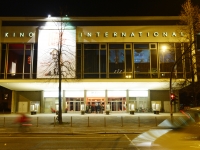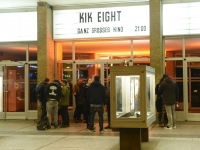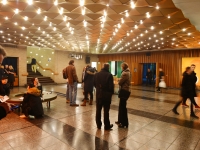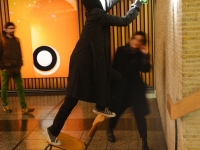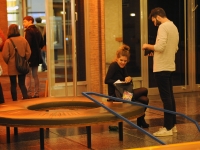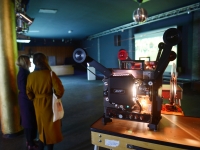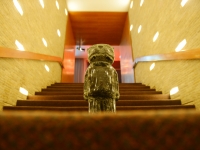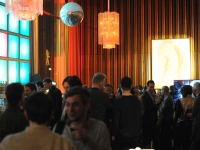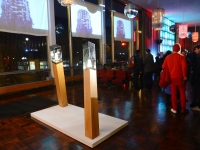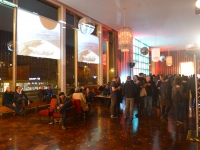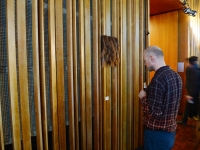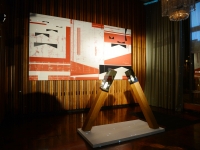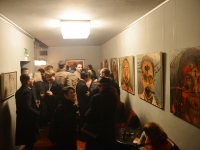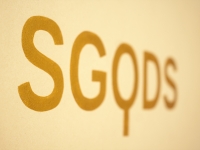MOMENTUM and Kunst-im-Kino
present
GANZ GROSSES KINO
Curated by Rachel Rits-Volloch, Constanze Kleiner, David Szauder
4 March 2016 @ 9pm – late
At Kino International
Karl-Marx-Allee 33, 10178 Berlin
 |

Featuring:
Qiu Anxiong, Lutz Becker, Andreas Blank, Ronald de Bloeme, Nicky Broekhuysen, Sarah Choo,
Nezaket Ekici, Thomas Eller, Theo Eshetu, Amir Fattal, Annika Glass / Miguel Wysocki,
Paula Godínez, Mariana Hahn, Constantin Hartenstein, Bart Hess, Olaf Holzapfel,
Jarik Jongman, Yuan Goan-Ming, Gülsün Karamustafa, Hannu Karjalainen, Ola Kolehmainen,
David Krippendorff, Jan Kuck, Via Lewandowsky, Joep van Liefland, Sarah Lüdemann,
Bjorn Melhus, Tracey Moffatt, David Mozny, Timea Oravecz, Reynold Reynolds,
Stefan Rinck, Maik Schierloh, Gary Schlingheider, Martin Sexton, Varvara Shavrova,
Roman Soroko, Amanda Szabo, David Szauder & Anna Reka Baktay, Mariana Vassileva,
Alexandra Vogt, Gabriela Volanti, Wiebke Maria Wachmann, Clemens Wilhelm, Clara Winter
Ikono.TV presents
in three film-playlists works from:
Botticelli, Böcklin, Bruegel, Caravaggio, Courbet, Delacroix,
Dürer, C. D. Friedrich, Gericault, van Gogh, Goltzius, Goya,
Hiroshige, Hokusai, Mayakowsky, Mondrian, Piranesi
Ganz Grosses Kino is a common expression in German slang – a description of any dramatic event, on or off the screen, often used ironically as a mockery of the theater of daily life. Cinema has always been a way of traveling without traveling – moving images move us.
In an era of unprecedented mobility, life is becoming increasingly cinematic, as the fictions of the big screen blur into the realities of the daily news. Disaster scenarios with wars, bombs, disease, natural catastrophe, irrevocably rising sea levels. Is it Hollywood or CNN? Is art mirroring life or vise versa?
While many struggle to survive, we, the fortunate, surf. We surf the web, the slipstream, the information age. We are constantly connected via smartphones iPads and apps; inundated with images, texts, and tweets; relentlessly bombarded with events, invitations, and offers. We live lives of perpetual motion from one piece of information to the next, from one opportunity to the next, and from one place to the next. Mobility – both geographical and social – not so long ago the privilege of the few – is now taken for granted as the entitlement of the majority. But as more and more people relocate, our open borders can sadly result in closing minds.
Throughout Europe, nationalism is on the rise; otherness exacerbated by openness. Borders increasingly open to the right few still snap shut to the many others. Historically having expelled millions, Berlin is still making up for it, reinventing itself as the go-to capital of the mobility age.
At the geographical center of Europe, Berlin acts as a vortex, sucking in the cool young things of art, fashion, media, music; professionals and tourists, migrant laborers and refugees. Berlin is a city of migrants where everyone is always from elsewhere, somewhere anywhere but here. It is a city of mobile people and moving images.
Berlin is a pit-stop in the race of upward mobility; a place in-between; an ideal stage for acting out the stories of otherness; a screen onto which to project our lives as we zoom past onto the next bright distraction in this era of impermanence.
Ganz Grosses Kino is an exhibition of art from elsewhere, about otherness, on the move to somewhere else. It is a co-curation by 3 Berlin-based curators – Rachel Rits-Volloch of MOMENTUM, Constanze Kleiner, and David Szauder, with contributions from ikonoTV, and students of Bjørn Melhus’s Virtual Realities class at Kassel University. It is a timeless exhibition of time-based art, placing the human dramas of the Old Masters alongside the digital dramas of our age.
From Caravaggio to the present, human dramas remain the same throughout the ages: war and disease, love and beauty, religious turmoil. These are the realities of life, the subject of art, and in this era of mass information and weapons of mass destruction, our global political context is the greatest Grosses Kino of all: Kino International!
Using the setting of this iconic movie theater to reflect on the theater of life and art in Berlin, ‘Ganz Grosses Kino’ is our response to living in an age of displacement and distraction in a city perpetually rebuilding itself, ever evolving into somewhere else.
Qiu Anxiong (b. 1972, Chengdu) was born in the capital of Sichuan province in the southwest of China. There, he studied under the progressive artistic practice of Ye Yongqing and Zhang Xiaogang. Qiu and his friends collectively founded a bar that became a hub for the blossoming underground music and art circles in Sichuan, and his colleagues included He Duoling, Zhou Chunya, and Shen Xiaotong. In his animated films, Qiu co-mingles the classical and the contemporary, using the traditional Chinese ink-and-wash style to transpose contemporary social and environmental issues onto traditional Chinese landscapes. Qiu has exhibited broadly internationally, having studied contemporary international art and traditional Chinese culture at the Kunsthochschule Kassel, Germany.
In 2004 he began teaching at Shanghai Normal University and currently lives and works in Shanghai. Qiu received the Chinese Contemporary Art Award in 2006 and has exhibited widely, including a recent solo-show, titled Qiu Anxiong, The New Book of Mountains and Seas II at the Arken Museum of Modern Art in Ishøj, Denmark (2013) and group exhibition ‘Ink Art’ at the Metropolitan Museum of Art in New York (2013). He is one of the artists undertaking the PANDAMONIUM Residency, and will be producing new work for this show.
‘Cake’ (2012)

Year Produced: 2014
Medium: Video
Duration: 6 min 2 sec
After working predominantly in oil painting during his studies in Kassel and having later turned to landscape painting in the tradition of the old Chinese masters, Qiu’s return to Shanghai in 2004 marked a shift in interest towards video art.
Marked by the same quiet detachment and timelessness as his previous works, but now combining painting, drawing and clay in his animations, Cake offers an exquisitely crafted contemplation on the past, the present, and the relationship between the two.
Lutz Becker is a filmmaker, artist and curator from Berlin who lives and works in London. He is of a generation still affected by the aftermath of the WW2, the rebuilding of Germany and the student’s revolt of the late 60s. His films, videos and curatorial projects have been shown internationally. His paintings are in institutional and private collections.
As a student in London he embraced the forward looking spirit of abstraction and artistic internationalism. This led him towards the painterly procedures of informel. He got interested in the synthetic sound structures of electronic music which lead him towards the making of experimental abstract films at the BBC. His preoccupation with movement and time influenced much of his film and video work.
Becker is a director/producer of political and art documentaries such as Double Headed Eagle, Lion of Judah and Vita Futurista to name a few as well as TV productions, such as Nuremberg
in History. He participated as a guest artist at the First Kiev Biennale in 2012 with the video installation, The Scream and is currently preparing the reconstruction of Sergei Eisenstein’s film Que viva Mexico!.
Besides the work as artist and film maker he is an expert on Russian Constructivism and Italian Futurism. He curated for Tate Modern the Moscow section of Century City 2001 and for the State Museum of Modern Art, Thessaloniki, Construction: Tatlin and After 2002, for the Estorick Collection, London, a survey of European photomontage Cut & Paste 2008, for Kettle’s Yard, Cambridge, a show of 20th Century drawings Modern Times: Responding to Chaos 2010. Most recently he co-curated Solomon Nikritin – George Grosz, Political Terror and Social Decadence in Europe between the Wars at the State Museum of Modern Art, Thessaloniki.
After the Wall (2012)
Sound piece
A sound installation commissioned for the exhibition After the Wall held at the Moderna Museet Stockholm in 1999, also curated by David Elliott. Its five constituent sound montages are based on original recordings made at the fall of the Berlin Wall. The fall of the Berlin Wall 26 years ago, in November 1989, symbolised the end of the separation of the City of Berlin, as well as that of Germany into an Eastern and a Western state. It marked, for everybody to see, the final collapse of Communism. It was a moment in history that promised to the people of Germany and other Europeans a new beginning.
Andreas Blank was born in Ansbach, Germany in 1976. He attended the Karlsruhe State Academy of Art (Staatliche Akademie der Bildenden Künste) and studied in the class of Harald Klingelhöller. He has been accredited with a German National Academic Foundation scholarship, and received his MFA from the Royal College of Art in London. Blank lives and works in London and Berlin.
What seems casual and random in Andreas Blank´s sculptures, cold and distant, are rather rare stones from quarries around the world, processed and carved in a tedious working process. Utilizing classical sculptural technique, Blank creates marble, alabaster, sandstone and limestone sculptures resembling everyday objects. In the discourse of image and likeness, they lose their functional purpose, transcending into pure, formalistic objects. Historically intended primarily for political representation or religious devotion, Andreas Blank’s stone sculptures question a (post) modernist nihilism.
Still Life (2012)
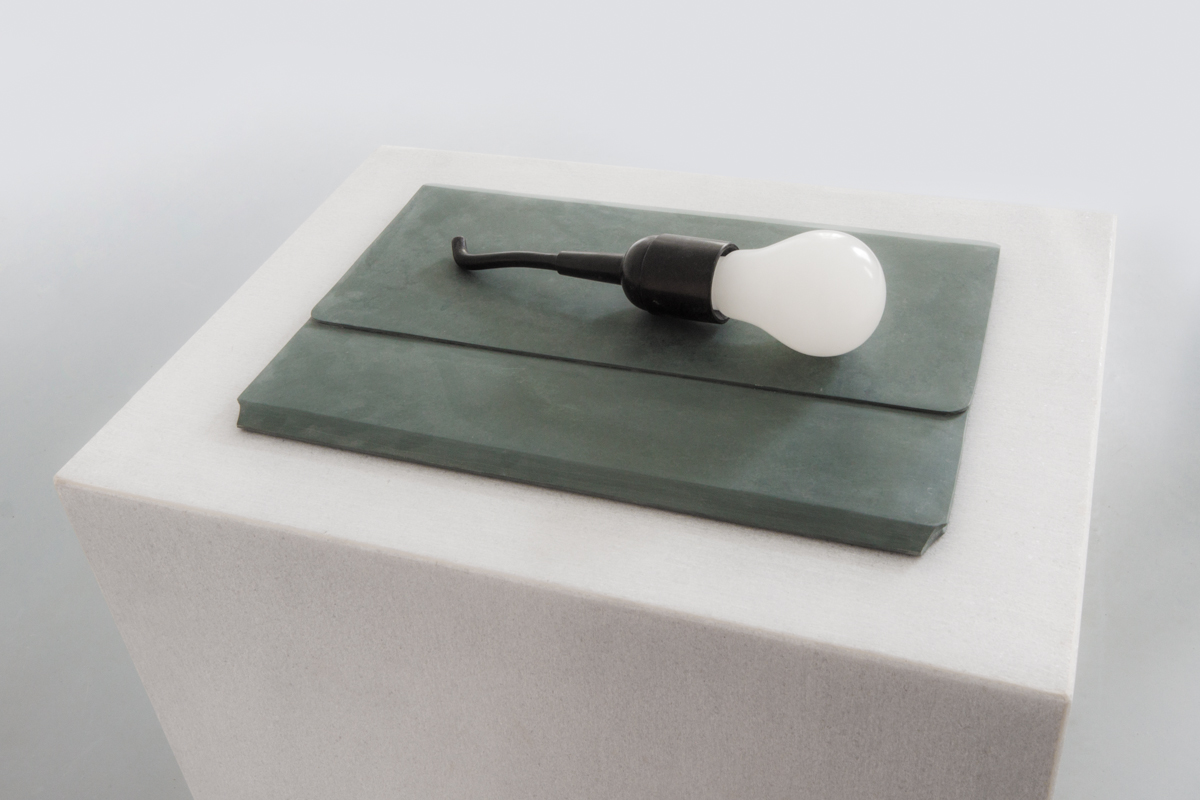
In an era in which imagery is increasingly superseding language, Ronald de Bloeme (NL,*1971) analyses the origin of signals and the components of their persuasiveness. How do producers of visual language manage to manipulate neutral form and colour in a way that they induce a subconscious process of identification for the largest possible number of individuals of a specifically defined target group? To what extent does red next to white evoke a flag or the packaging of a chocolate bar?
Through appropriation, deconstruction and manipulation using a computer Ronald de Bloeme transforms image templates of our consumer society. He censors existing text and eliminates any figurative references, creating a pure geometric language, which he again combines and distorts into arresting compositions. These are then transferred to canvas with competing colourful layers of high-gloss and matt enamel paint. The resultant expansive surfaces capture our attention through the combination of colour and use of various techniques, with a suggestive impact analogous to the original advertising medium’s intention.
Slips serie 6 (2012)
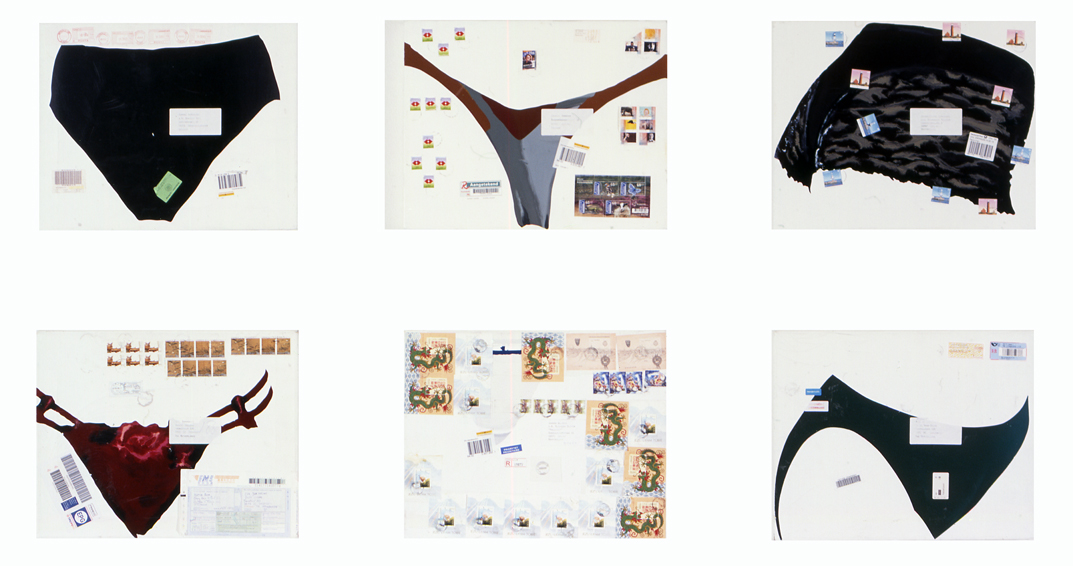
Nezaket Ekici’s video, installations and performances are often process-based and ask viewers to derive their own emotional and intellectual interpretations. In her work, complex, often controversial topics are suspensefully countered by their aestheticizing presentation. Ekici frequently uses her own Turkish origins and education as a subject of tension, pitting her background against her living environment in present-day Germany. Cultural, geographic and individual boundaries, transgressions, gender, cross-border connections and authorial bodies are central to Ekici’s works. By highlighting these themes in everyday life and placing them in a new context, she aims to interconnect every element to form a total work of art — a Gesamtkunstwerk.
Born in Kırşehir, Turkey in 1970, Ekici studied art pedagogics, sculpture and performance in Munich and Braunschweig, Germany. She then began working with performance and completed a master’s degree in Performance Art with Marina Abramovic. She has exhibited internationally, with a total of more than 120 different performances on 4 continents in more than 100 cities and 30 countries. She currently lives and works in Berlin and Stuttgart.
Veilling and Reveilling
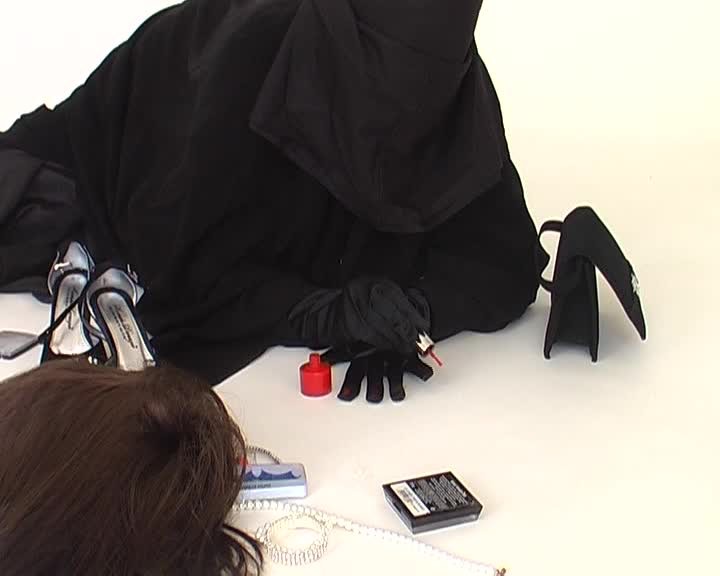
Year Produced: 2009
Medium: Video Performance on DVD PAL
Duration: 24 min 17 sec (on loop)
Whether in Germany or in the artist’s native Turkey, the question of the Tschador’s meaning and effects remains controversial. How do streamlined notions of feminine beauty intersect with a headscarf’s political and religious references? For Ekici, stories of Turkish students donning wigs to conceal their forbidden headscarves at university, or methods of transporting beauty goods beneath the veil, have led her to question if women can ever truly wear head coverings out of free will. In the video performance Veiling and Reveiling, Ekici wears a Tschador in which various items are concealed: a wig, make-up, bag, bra, dress, tights, jewelry, shoes, artificial eyelashes.
The video begins when the individual pieces are produced from the pockets of the Tschador and concludes when the veil has been fully redecorated, a willful inversion of public and private space.
Thomas Eller (b. 1964, Coburg) started his studies in Fine Arts at the Hochschule der Künste of Berlin. After his forced dismission, he went on to graduate in Sciences of Religion, Philosophy and Art History from the Freie Universität, Berlin. He has worked as research assistant at the Science Center for Sociology in Berlin (WZB), is the founder of online art magazine artnet.de, where he served as editior-in-chief and was appointed managing director for the German branch of artnet AG, as well as executive director and artistic director of Temporäre Kunsthalle in Berlin. Eller is a member of various institutions, including the Association Internationale des Critiques d’Art (AICA) and the Steering Committee for Creative Industries at the Chamber of Commerce in Berlin (IHK). In his photo-sculptures, Eller manifests a desire to review our relationship with perception, through a confrontation between the viewer, the process of reception and the image, by deliberately destabilizing the picture. He has received various prizes, including the Karl-Schmidt-Rottluff Prize (1996), the Villa-Romana Prize (2000), the Art Omi International Art Center (2002) and the Käthe-Kollwitz-Prize from the Akademie der Künste Berlin (2006). Recent exhibitions include his solo ‘The ego Show – A Group Exhibition’ at Autocenter, Berlin (2010) and group exhibitions ‘The Name, The Nose’ at MuseoLaboratorio Ex Manifatture, Tabacchi (2013). Eller is the co-curator of ‘The 8 of Paths: Art in Beijing‘, opening at the Uferhallen in Berlin (2014).
THE White Male Complex #5[Lost]
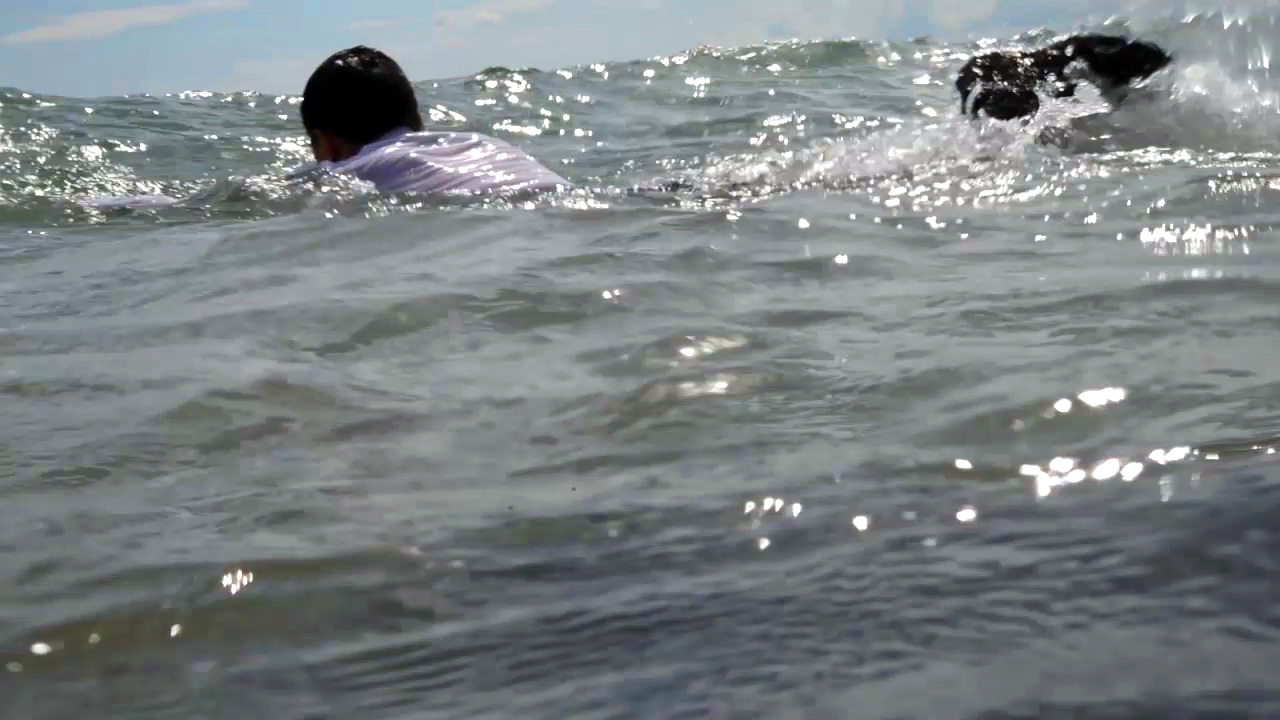
Year Produced: 2014
Medium: HD Video
Duration: 11 min 25 sec
Shot on Lampedusa in 2014, on the beach infamous for its migrant traffic, Eller lives the plight of so many who wash up on that shore. Eternally looping at the cusp of life and death, this work leaves the viewer feeling oddly complicit in one man’s surreal struggle.Yet while one white man submerged in a suit is surreal, thousands of African migrants are our reality. Like Isaac Julien’s 2010 work Ten Thousand Waves, on the deaths of Chinese migrant cockle pickers on the shores of the UK, Eller in his own language tackles the watery deaths
Amir Fattal (b. in Tel Avivi in 1978) was distinguished with the GASAG Art Prize in 2008 and graduated from Universität der Künste, Berlin, in 2009. Based in Berlin to this day, Fattal is a conceptual artist whose practice is one of historical reflection grounded in the history of aesthetics and cultural schisms. Working in the media of video, photography, sculpture, and installation, his work forms a focused response to the diverse questions raised by his adoptive city of Berlin, where the memory, culture, architecture, indeed every thread in the fabric of this city is problematised by its history.
Fattal participated in numerous international group exhibitions. Acclaimed solo exhibitions include: Mesopotopography, Anna Jill Lüpertz Gallery, Berlin (2015); From the End to the Beginning, Kunstquerier Bethanien, Berlin (2014); Parallel Lines, Teapot Gallery, Cologne, Germany (2013); Goral Ehad, St-art, Tel Aviv, Israel (2012); Shadow of Smoke Rings on the Wall, Artitude Kunstverein, Berlin (2011); Tomorrow Gets Me Higher, Wilde Gallery, Berlin (2010).
Selected group exhibitions include: Collection Enea Righi, Museo Fortuny, Venice (2016); Interior / Exterior / Sculpture, Belenius/Nordenhake Gallery, Stockholm, Sweden (2015); A Naked Singularity, Studio Garaicoa, Madrid, Spain (2015); Fragments of Empires, MOMENTUM, Berlin (2014-15); A Letter From Dr. Faustus, Herzliya Museum of Contemporary Art, Israel (2014); Fundación Botín, Villa Iris, Santander, Spain (2014); Dahlstrøm & Fattal, Beers Lambert Contemporary, London (2013); III Moscow International Biennale for Young Art, Moscow, Russia (2012); Body Without Body, Georg Kolbe Museum, Berlin (2011). Fattal was curator of Tape Modern Berlin, an acclaimed series of group exhibitions featuring emerging and established artists.
Frieze
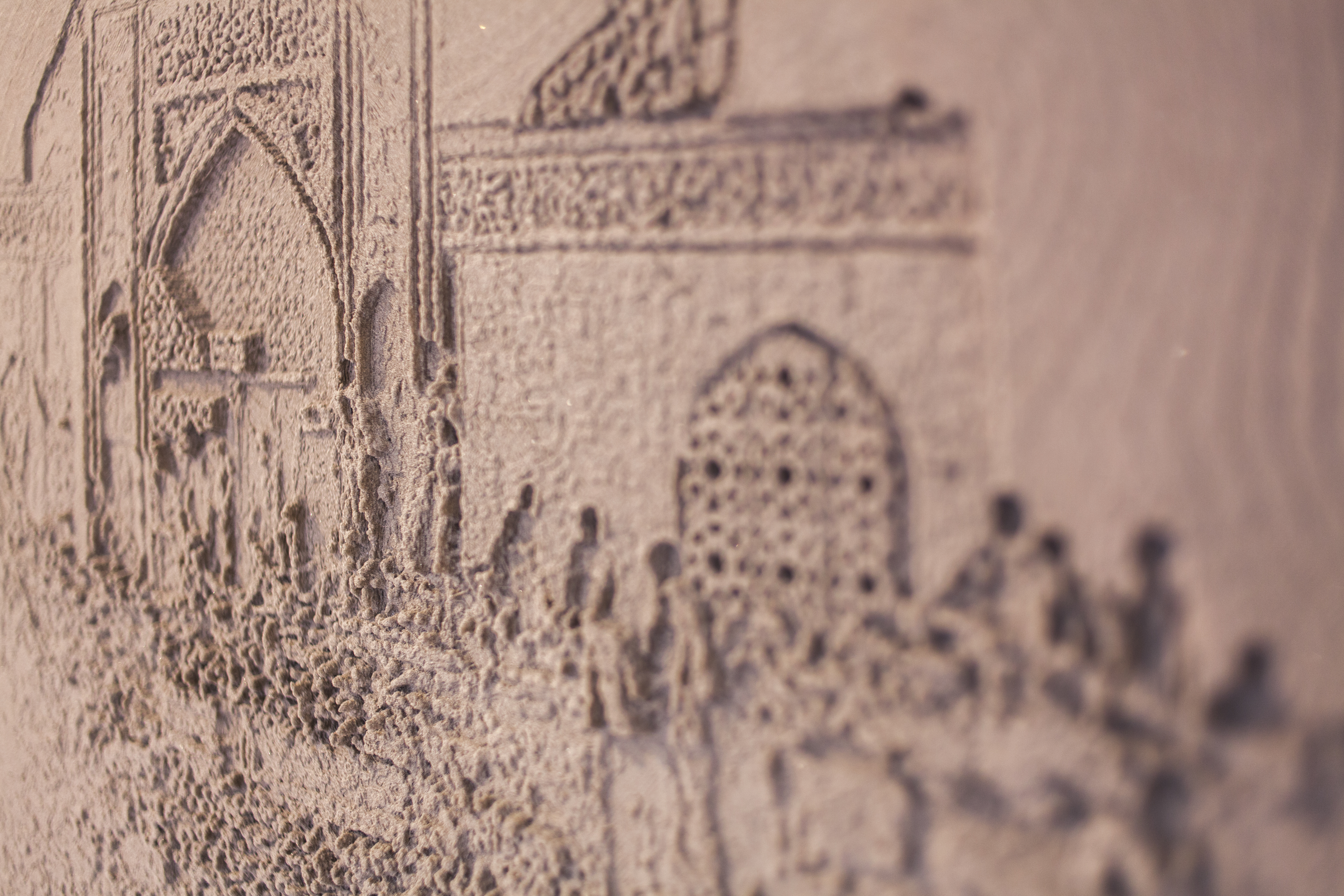
Frieze (2015), a series of 3D printed reliefs that were generated digitally out of photographs, taken from the Internet, of historical buildings in varying states of dila- pidation. Sculptural meditations on loss and memory, these reliefs are accompanied by storyboards that, stylistically echoing the triumphalist narratives of the friezes of ancient Assyria, Sumeria, Babylon, Greece or Rome, expose how victory is currently expressed by destruction and why these historical monuments have become ideological battlegrounds.
Two Colomns
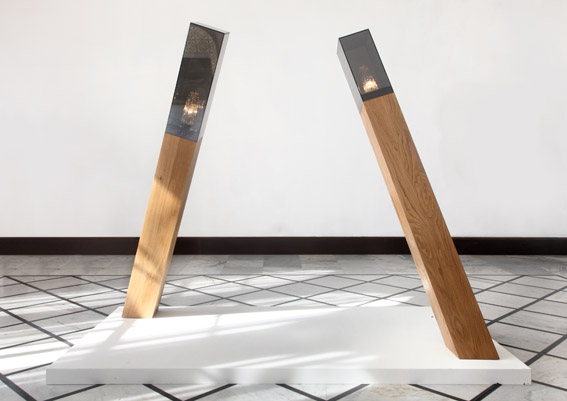
The series of column installations are a hybrid of plinths with a modernistic/minimalist form and the museum vitrine, a structure that protects valuable objects.
Inside the vitrines are lamps from the ‘60s and ‘70s both from East and West Germany that Fattal collected over the course of four years from flea markets in Berlin. By placing these lamps inside the glass vitrines, these ‘cheap’ second-hand lamps become precious historical objects.
The style of the lamps is both rooted in ‘20s German design related to ideas of the ‘Crystal Palace’ as well as to the era of Germany’s division when production systems were separated into east and west.
The use of light evokes reflections about memorial objects and feelings of nostalgia.
High Speed running in a top university’s gym. looking great. Being fit, beautiful, smart, feminin and strong at the same time, at any time. Maintaining the images as uploaded on social media. In fact impossible but day-to-day reality. From September 2014 to August 2015 Annika Glass was studying Chinese at National Taiwan University (NTU) in Taipei. NTU is generally considered to be one of the best universities in Taiwan. The videos were shot in the NTU gym, which is not only used for exercising, but also for taking selfies or performing any other kind of self-portrayal and self-staging activities.
Split Time

Mariana Hahn was born in Schwäbisch Hall and lives and works in Berlin, Germany. She received a Fine Arts degree from the University of the Arts, London in 2012. Hahn poetically questions human fate as a universal condition through photography, performance and video. Hahn’s artistic practice is based on thinking of the body as carrier of continually weaving narrative. She believes that ‘weaving’ is a metaphor for creating human autonomy. Hahn often uses textiles that take the place of the human body, the textile itself becoming the carrier of the living narrative. Conceptually her work feeds from sociological and anthropological theories, as well as from the every day. In all of Hahn’s works one finds a story line, which does not follow chronological order but instead can be followed at any point in the narrative. Hahn has exhibited her work internationally, at museums, galleries and festivals.
Burn My Love
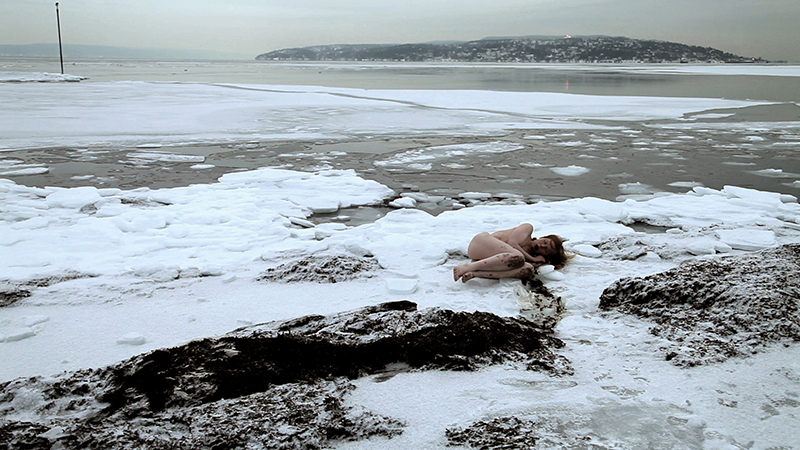
The work Burn My Love, Burn explores the body as the carrier of historical signature. By inscribing a poem on a shroud that once belonged to her recently passed grandmother – and then burning and consuming its remains – Hahn examines the relationship between text, memory making, and the human – particularly female – form. Split between the remaining performance relics, video stills, and the video itself.
“The body does so by will, it inscribes, devours the story, becoming a container that vibrates and lives within a narrative. The shroud becomes the elementary signifier of such a historical narrative, it has been impregnated by the story, acts as the monument.
Through the burning, it can become part of an organic form in motion. The text conditions and creates the body within the very specifically hermetically sealed space.
The words activate the body’s field of memory as much as it creates a new one, adding on to the net of connotations the figure has toward words. The ritual becomes the form through which this transformation can be made, the body eats the body, destroys and paints again, another image. Again this is done by the word, it creates the flesh, gives it differentiating coloration, its plausible point of view. The body acts as a paper, it is inscribed by those murmurs of history, becoming a living artifact of its own history.”
Constantin Hartenstein is an artist based in Berlin and New York. He studied “Art and Media” at University of the Arts Berlin; and graduated with honors in 2009. In 2010, he was awarded the Meisterschüler degree (post-graduate M.F.A.) at Braunschweig University of Art studying “Fine Arts“ with Candice Breitz
Hartenstein participated in several artist in residency programs such as Lower East Side Artists Alliance Inc. New York, Geumcheon Art Space Seoul (KR), Triangle Arts Association New York (USA), Grand Central Art Center Santa Ana (USA), Flux Factory New York (USA) and Künstlerdorf Schöppingen (GER). He is the recipient of numerous prizes and awards such as Kraft Prize for New Media (USA), LOOP Discovery Award (shortlist), Kunstpreis Haus am Kleistpark (shortlist), IFA Künstlerkontakte project grant (GER/CN), Kunststiftung NRW grant (GER), video art prize BRAWO (GER), project grant Stichting Stokroos (NL) and the Karl Hofer Gesellschaft studio grant (GER). In 2012, he was selected to participate in the “VISIO emerging video artists” program in Florence, Italy.
His works are included in public and private collections; and have been exhibited and screened at international galleries and institutions.
Alpha
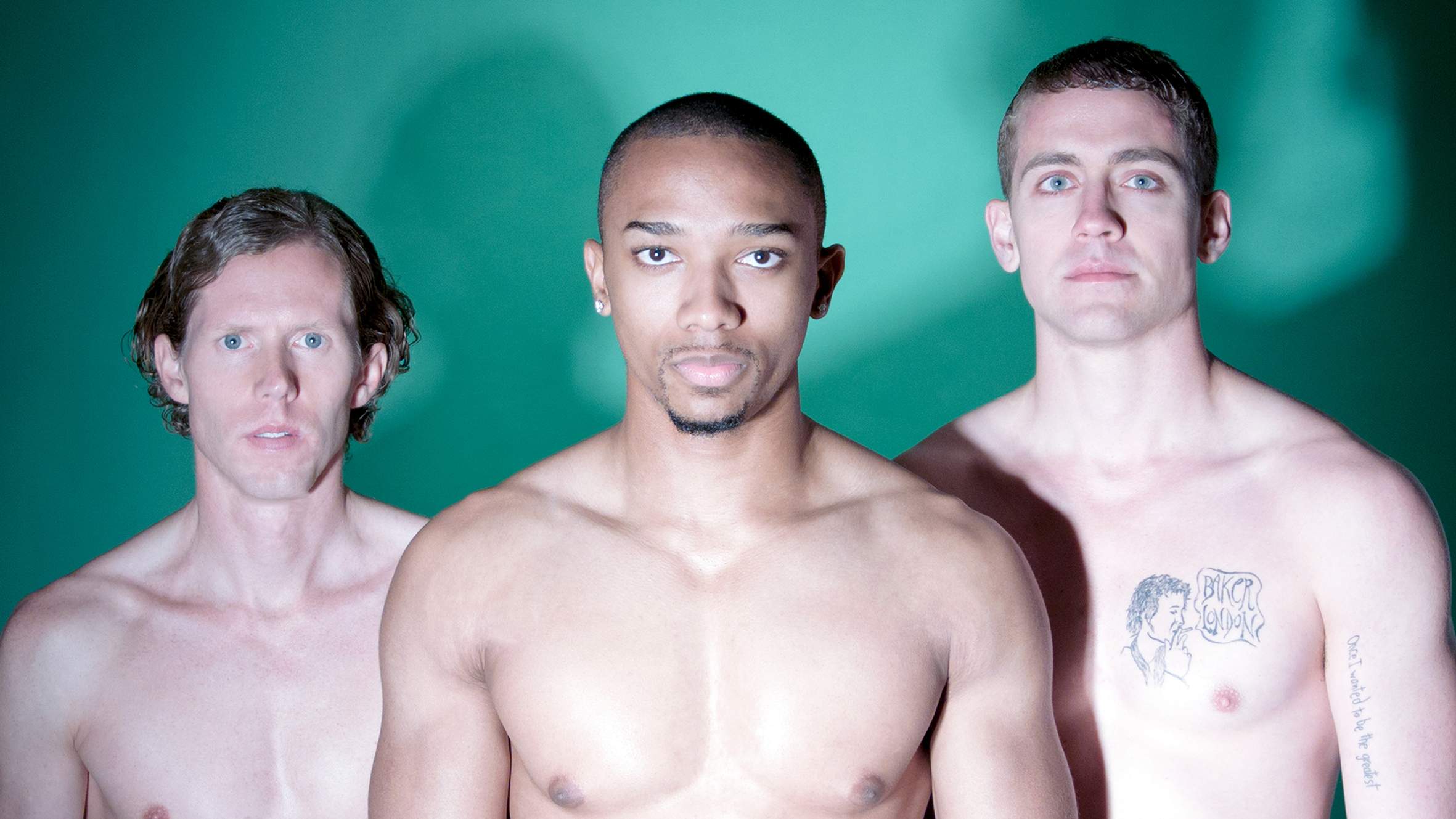
Medium: HD video projection (via HDMI signal)
Duration: 11:22 min (loop)
Codecs: ProRes HQ or H.264
The first letter of the Greek alphabet, Alpha has come to denote “the first of
anything.” Animal researchers use the word to signify dominance, applying it to the leader of the pack, who is first in power and importance. Among humans, an Alpha-Male is defined as “a man tending to assume a dominant role in social or professional situations, or thought to possess the qualities and confidence for leadership.”
This project is based on a subliminal soundtrack called ‘Be the Alpha Male’. The narration is re-enacted by three muscular men. The resulting multi-layered video is presented as a larger than life projection.
A former assistant of Anselm Kiefer, Jarik Jongman uses both his own photographs and anonymous pictures found in flea markets, books, magazines and on the Internet as a starting point for his engagement with archetypal imagery.
Dutch born, he studied in Arnhem and has had numerous exhibitions in London, Berlin, Switzerland, Amsterdam and at the 53rd (2009) and 54th (2011) Venice Biennale in collateral events. He currently lives and works in Amsterdam.
Facing Revolt
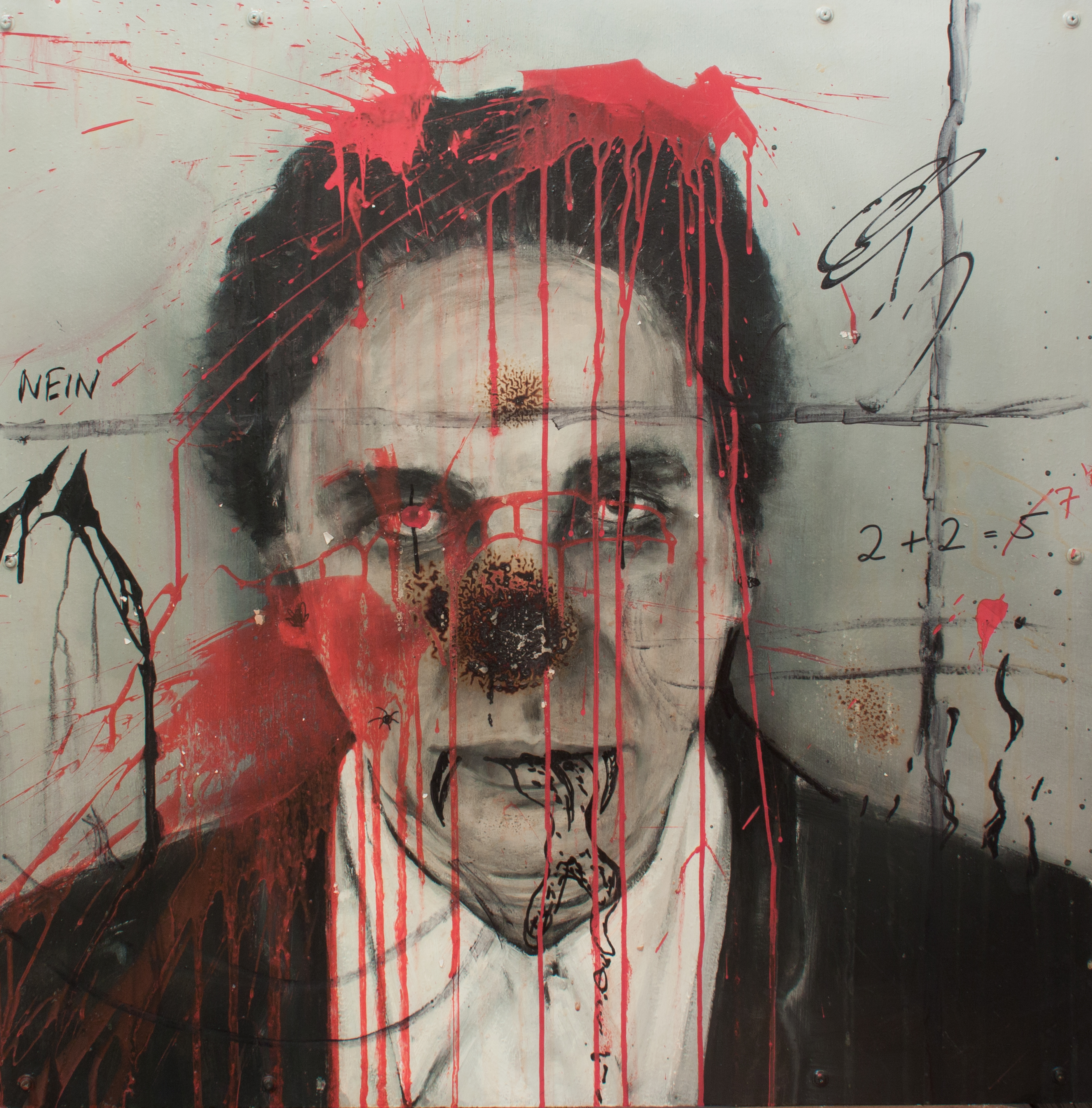
Year Produced: 2012
Series: (de)facing revolt: ten- thirty individual paintings, portraits
Medium: Oil on canvas with water-soluble marker, pen and egg
Duration: 2 min 22 sec
Size: 80 x 80 cm
Jongman’s (de)facing revolt is a series of painted portraits of icons of the contemporary art world: some of the richest and most influential players of our time, which he subsequently, with the help of the audience, defaced. The result of this interactive performance is a series of mutilated, paint bombed and blowtorched images, reminiscent of the damaged murals and toppled statues of ousted dictators across the world.
As a political comment claimed within the safety of a gallery’s walls, Jongman’s work self-consciously reflects on the purposelessness of art in the art world today – a symbolic statement without risk, a salon revolution without victims, but a system in which the artist must still abide in order to survive.
Gülsün Karamustafa was born in 1946 in Ankara, Turkey. She lives and works in Istanbul, where she is recognized as one of the most important and pioneering Turkish contemporary artists. Her work addresses questions of migration, displacement and military dictatorship (during the 1970s she was imprisoned by the Turkish military). She was refused a passport for sixteen years until the mid-80s and, unlike other Turkish artists, could not emigrate or travel. This enforced isolation led her to an analysis of her own situation and context: the city of Istanbul, interior migration and nomadism within Turkey, and the ideological and psychological ramifications of identity. Like a sociologist or anthropologist, Gülsün Karamustafa explores the historical and social connections of oriental cultures in her works, often using materials that express the hybrid character of different cultures and religions.
Personal Time Quartet

Year Produced: 2000
Medium: 4-Channel Video Installation
Duration: 2 min 33 sec
The video and sound installation Personal Time Quartet is designed as an ever-changing soundscape to accompany continually repeating images of a never-ending childhood. The sound was composed especially for this work by Slovak rock musician, Peter Mahadic. Comprised of various sound-samples each track was made to activate one of the four channels of moving image. The work is installed in such a way that each time the work is turned on anew, the four channels never synchronize, instead producing each time a new quartet to accompany the looping images. The four-part video is concerned with the point of intersection between the artist’s own personal biography and the history of her home country.
Hannu Karjalainen was born in 1978 in Haapavesi, Finland. He graduated from The University of Arts (now Aalto University) in 2005 with an MA in Photographic Arts. Karjalainen was awarded the Young Artist of the Year prize in 2009 in Tampere Art Museum in Finland and he received the Turku Biennale Prize in 2007. His work – comprising mostly of video and photography – has been shown in galleries and museum shows around the world, most recently in the International Biennale of Photography in Bogota, Colombia as well as in solo shows in Oulu Art Museum in Finland and Braverman Gallery in Tel Aviv, Israel.
Personal Time Quartet
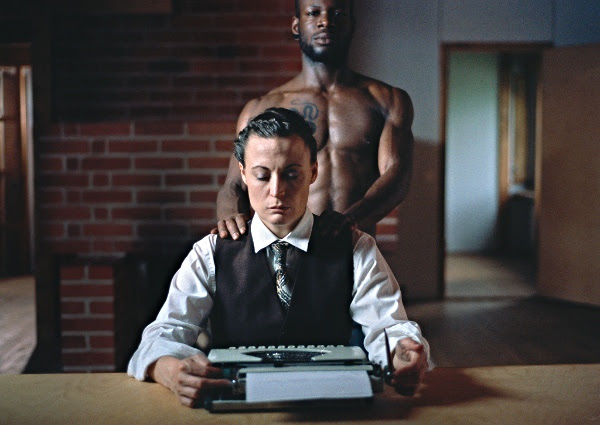
Medium: 16mm film scanned to digital, 5.1 surround sound,
Duration: 14 minutes 08 seconds
The House Protects the Dreamer is an experimental narrative film about a fictive modern architect’s creative process. The dreamlike film follows the architect and her assistant producing experiments that verge on the absurd. It is a film about faith, disillusionment and renewal.
The film was shot in and around a 1960 Aulis Blomstedt villa in Helsinki and features Heli Haltia and Dwayne Strike. Music composed by Infinite Livez and Hannu Karjalainen.
The full version of the film premiered in gallery Hippolyte in Helsinki, in september 2014.
Ola Kolehmainen, artist (M.A.), was born in Helsinki Finland. He studied four years of Journalism at the Helsinki University, before entering to the University of Art and Design Helsinki (UIAH) to study photography. During his study years he also worked as freelance pictures editor in the national TV-news graphic department. Since spring 2005 Kolehmainen has lived and worked in Berlin.
His 1st solo exhibition in 1995 as a student at University of Art and Design photography department was shortlisted for Photograph Finlandia Award in Helsinki and for European Photography Award in Bad Homburg, Germany. Since 1995 Kolehmainen has had over 30 solo shows in galleries and museums. Also his work has been shown globally in over 90 group shows. He has published 4 monographs. Kolehmainen works appear in various Public, Company and Private collection in five continents. The Royal Institute of British Architects awarded Kolehmainen the RIBA honorary Fellowship (Hon FRIBA) 2015.
Statement on works 1923 and Geometric Light I:
Artist Ola Kolehmainen’s works are about space, light and color. Recently time has been added as the 4th element. Photography is his medium. And architecture is starting point for the works. The selection of the photographed edifices is based on research and studies of the architects and their ideologies and thinking. Interlinks and influences between the architects creates an additional interesting dimension for the buildings.
Building called Workers’ Club
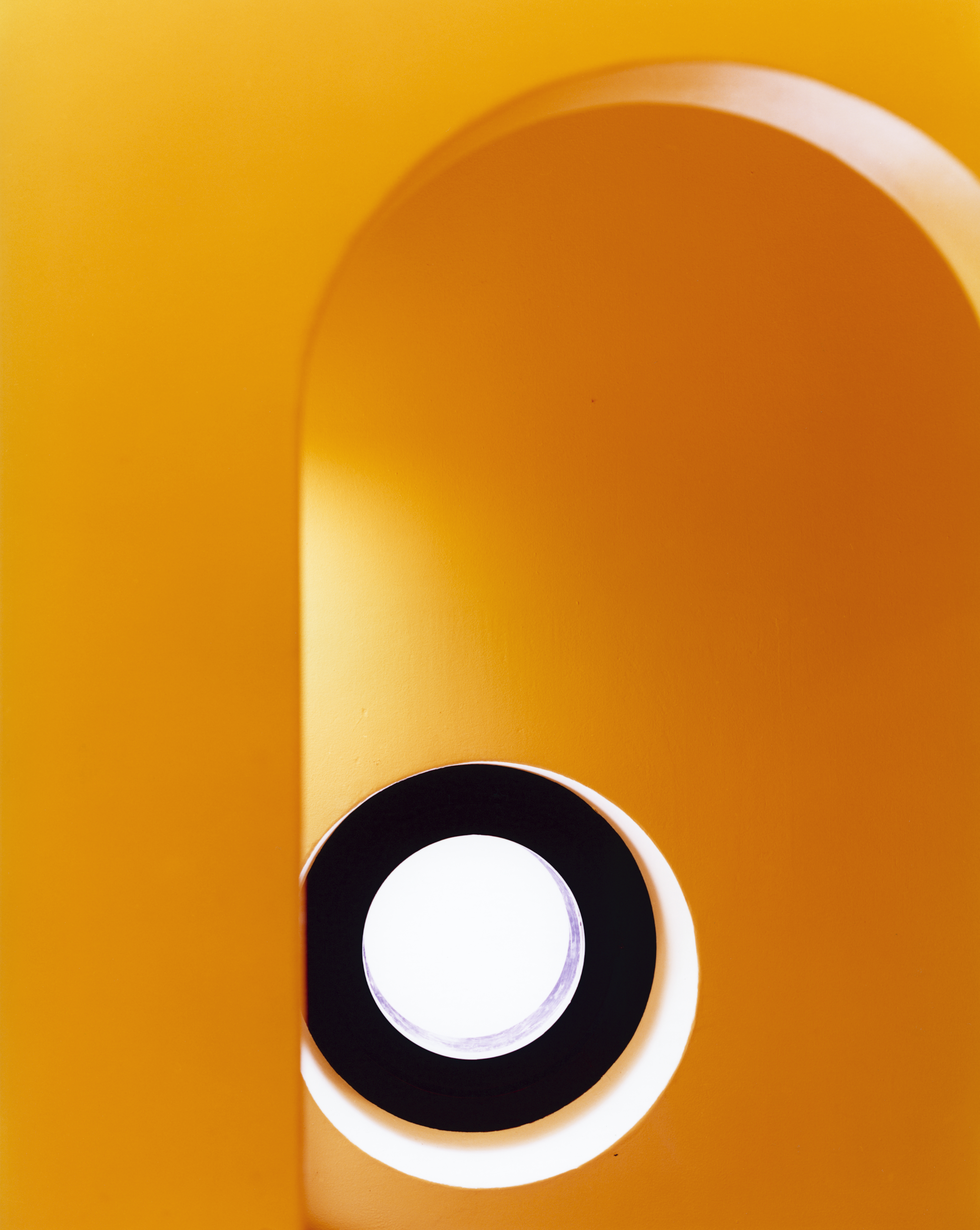
A theater designed by Alvar Aalto 1925 in Finland. Aalto was famous for denying his own influences. Worker´s Club was an exception. In 1923 Alvar Aalto and his wife Aino visited Stockholm and Gunnar Asplund, who was Aalto´s idol. Asplund’s design for the Stockholm city library had a huge impact for Aalto’s workers’ club building. Ironically Asplund’s library was erected two years after the Workers’ Club was finished. The legacy of Aalto is immense. His concepts are still very valid and interpreted to language of contemporary architecture.
Geometric light 1
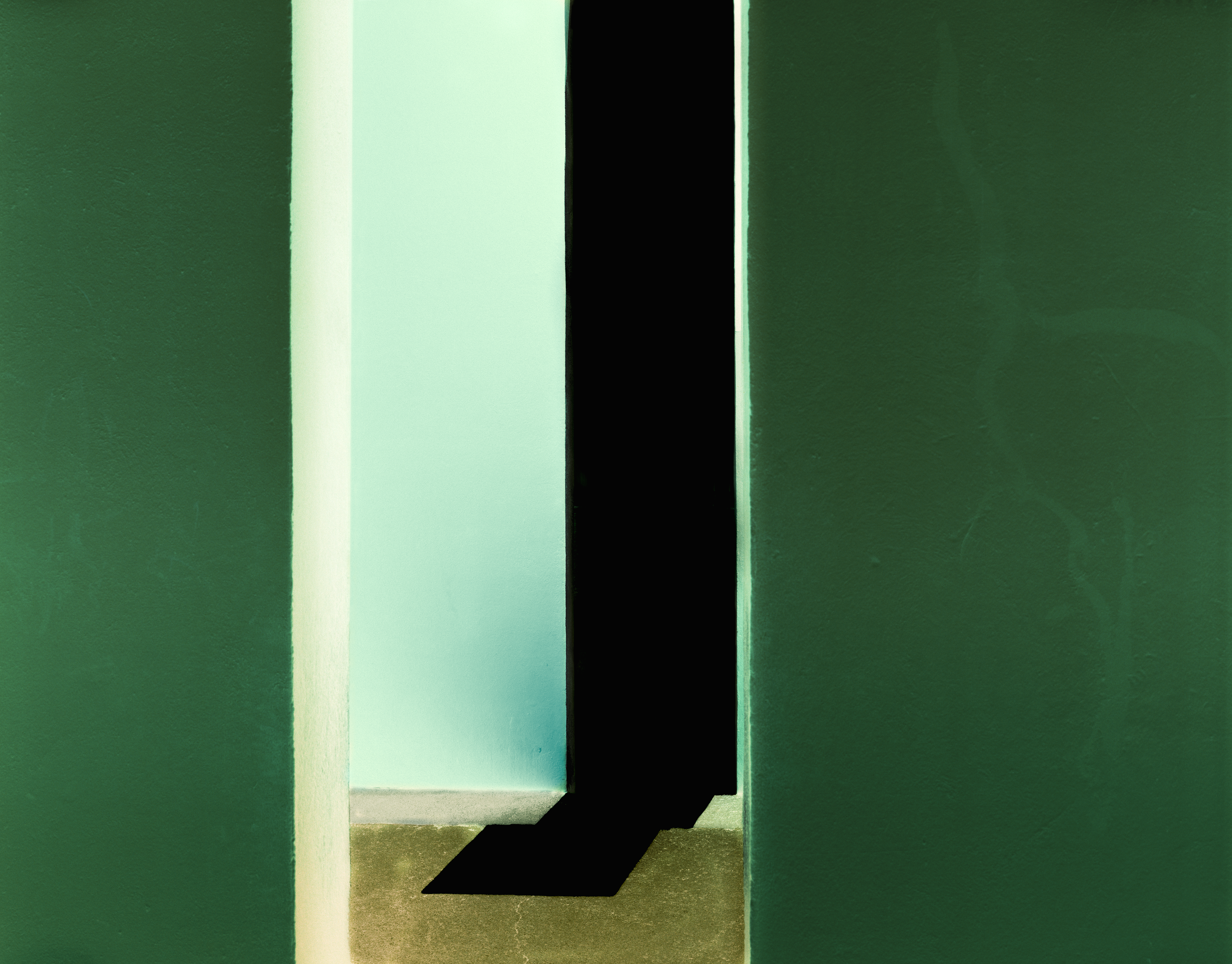
Work origins from a social housing building by Richard Bofill’s Taller de Arquitectura. Bofill´s architect office conceived this complex construction called La Muralla Roja in 1973. Workgroup extended the idea of Le Corbusier’s Modulor. Le Corbusier used the Modulor system in scaling the architectural proportion. It was a continuation of the long tradition of Vitruvius, Leonardo da Vinci’s famous “Vitruvian Man” and the work of Leon Battista Alberti.
David Krippendorff is a US/German artist, video- and experimental film maker born in Berlin in 1967.
He grew up in Rome (Italy) and studied art at the University of Fine Arts in Berlin (Germany), where he graduated with a masters degree in 1997.
His works, films and videos have been shown internationally, a.o. at New Museum (New York), ICA (London), Hamburger Kunsthalle (Hamburg), Museum on the Seam (Jerusalem). He has participated in three Biennials (Prague, Poznan and Tel Aviv). He lives and works in Berlin.
Building called Workers’ Club
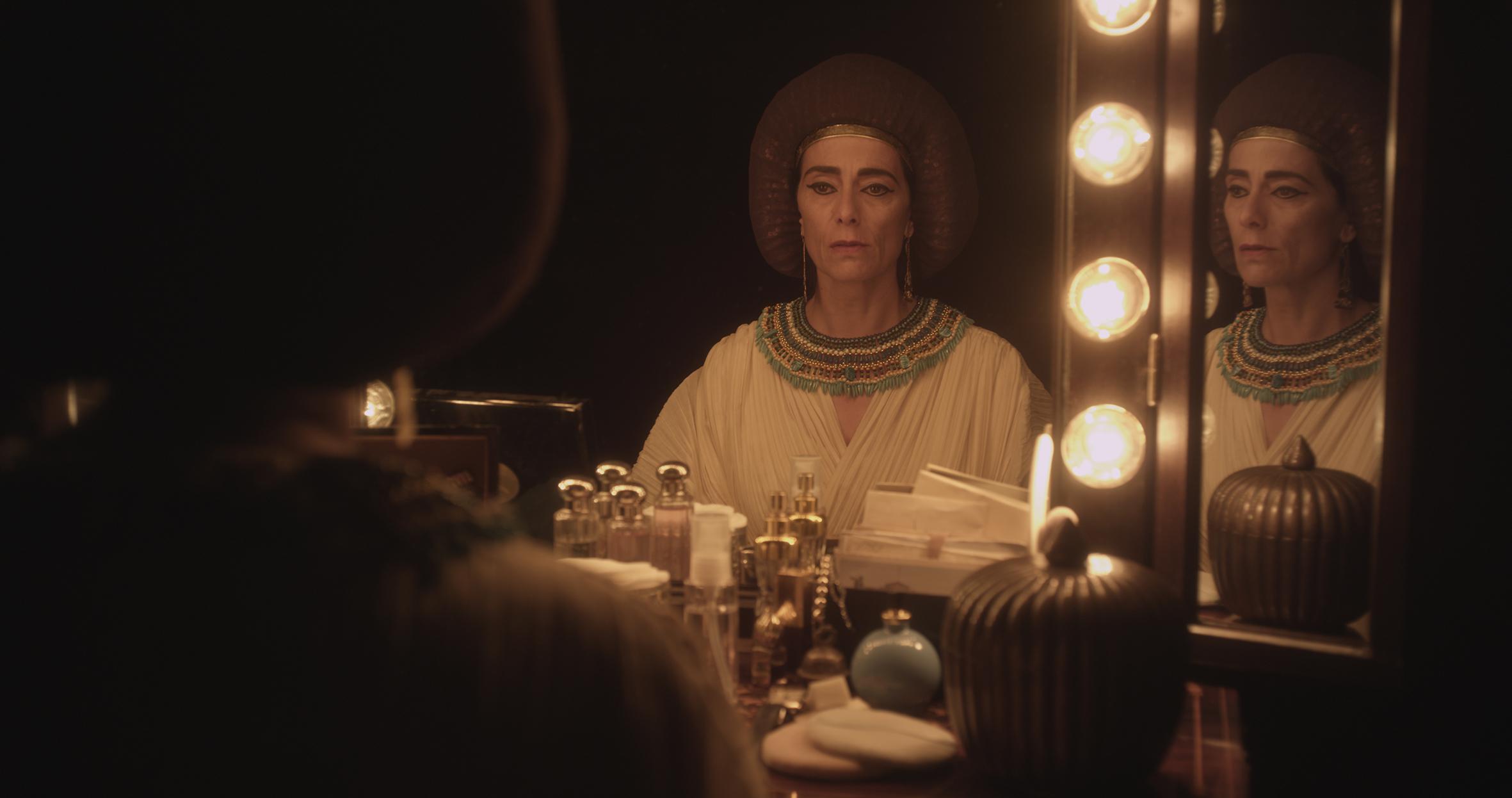
Year Produced: 2015
Medium: HD, color, stereo
Duration: 13min 43sec
Nothing Escapes My Eyes (2015) is about a silent transformation of a place and a human being. Inspired by the texts of Edward W. Said, the poems of Mahmoud Darwish and Verdi’s opera Aida, the film depicts in a metaphoric form current issues of cultural identity, loss and the pressures to conform. With no dialogues, the film is backed by a musical excerpt from Aida whose lyrics express the difficulties of being loyal to one’s country and cultural identity. The personal and urban transformation tackles on issues of identity, loss and disorientation as a result of historical colonialism and contemporary globalization.
Born in Hannover in 1978, lives in Berlin since 2004.
His focus lies on conceptional and performance art. This can be expressed through criticism of the unreflected awkward decadency of our nowadays society or even by playful constructions of reality. His ideas and conceptual art is expressed through all different kinds of media: sculptures, installations, video works, performances and design.
In contrast to conventional conceptual art he attaches great importance to the philosophical foundation of his work as well as their aesthetically immaculate design. In October 2013 he presented his design – the T.TABLE – at JR Gallery Berlin to a selected audience and therefore received considerable national and international press attention. Since June 2014 Jan Kuck has been represented by Bernheimer Contemporary. Currently he is preparing national and international solo- & group-exhibitions.
T.TABLE
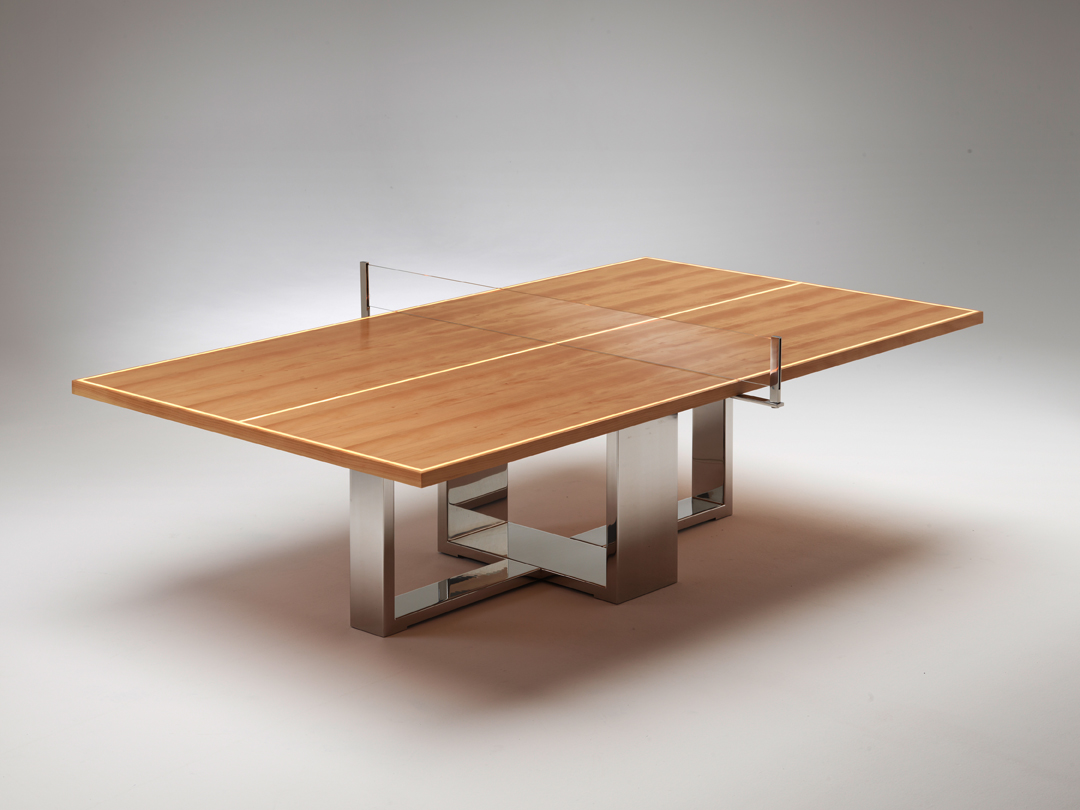
Year: 2013-2016
Medium: Sculpture
Technic: mixed media (stainless steel, wood veneer, glass, leather)
Edition: open
Dimensions: 275 x 152 x 76 cm
The interactive room sculpture T.TABLE has the ability to morph from an elegant office or dining room table to a unique Ping-Pong table.
The characteristic lines that mark every Ping-Pong table are illuminated by LEDs underneath the surface of the wood. When the LEDs are turned off no lines are visible, showing only the normal tabletop to the viewers.
All metal pieces consist of hand polished steel and retain their mirroring sheen without any use of chrome.
A shatterproof glass net sits in a specially fitted recess underneath the tabletop, alongside four magnetically attached leather-bound paddles. Finally, the base and the tabletop together resemble a large T shape, connecting the name of the object with its form.
Via Lewandowsky studied at the Hochschule für Bildende Künste Dresden from 1982 until 1987. Starting in 1985, he organised subversive performances together with the avant-guarde group, Autoperforationsartisten, that undermined the Communist art authorities of Eastern Germany (GDR). In 1989, shortly before the fall of the Berlin wall, he left the GDR and subsequently moved to West Berlin. Since then, he has travelled extensively and has lived for extended periods in New York, Rome, Peking and Canada. He now resides in Berlin.
Via Lewandowsky works in diverse artistic media. He is most familiar for his sculptural-installation works and exhibition scenographies with architectonic influences such as Gehirn und Denken: Kosmos im Kopf [Brain and Thinking: Cosmos in Mind: 2000] displayed at the German Hygiene Museum in Dresden. By the 1990s his work had already begun to incorporate elements of Sound Art; this has since become an important and integral part of much of his performance work. (e.g., Oh tu nove verde [Oh You Green Nine: 2011]; Applaus [Applause: 2008]).
Via Lewandowsky

When an abstract form becomes an attitude or where function does change form does change we are in the mind of someone thinking..
Listening to the sound of an organic shape forced to be square raises the question: who knows a damm thing about temptation.
Joep van Liefland (born 1966 in Utrecht) is a contemporary conceptual artist from Netherlands. He lives and works in Berlin.
His work focuses on the phenomenology of media and their transformation. He is particularly interested in the matter of impermanence and disappearance that are closely connected to the technological progress. Using the example of technology, Joep van Liefland addresses the process of alteration and transformation as well as the universal concepts that underlie the transition from old to new.
For his art pieces, Joep van Liefland uses various outdated distribution and storage devices. He arranges them into space-filling installations, as in the work series „VIDEO PALACE“, or uses them to create sculptures, wall objects, screen prints, and collages.
Since 2001, Joep van Liefland runs, together with Maik Schierloh, the art space AUTOCENTER in Berlin where international art positions are presented regularly.
2013-1 (Information 4)
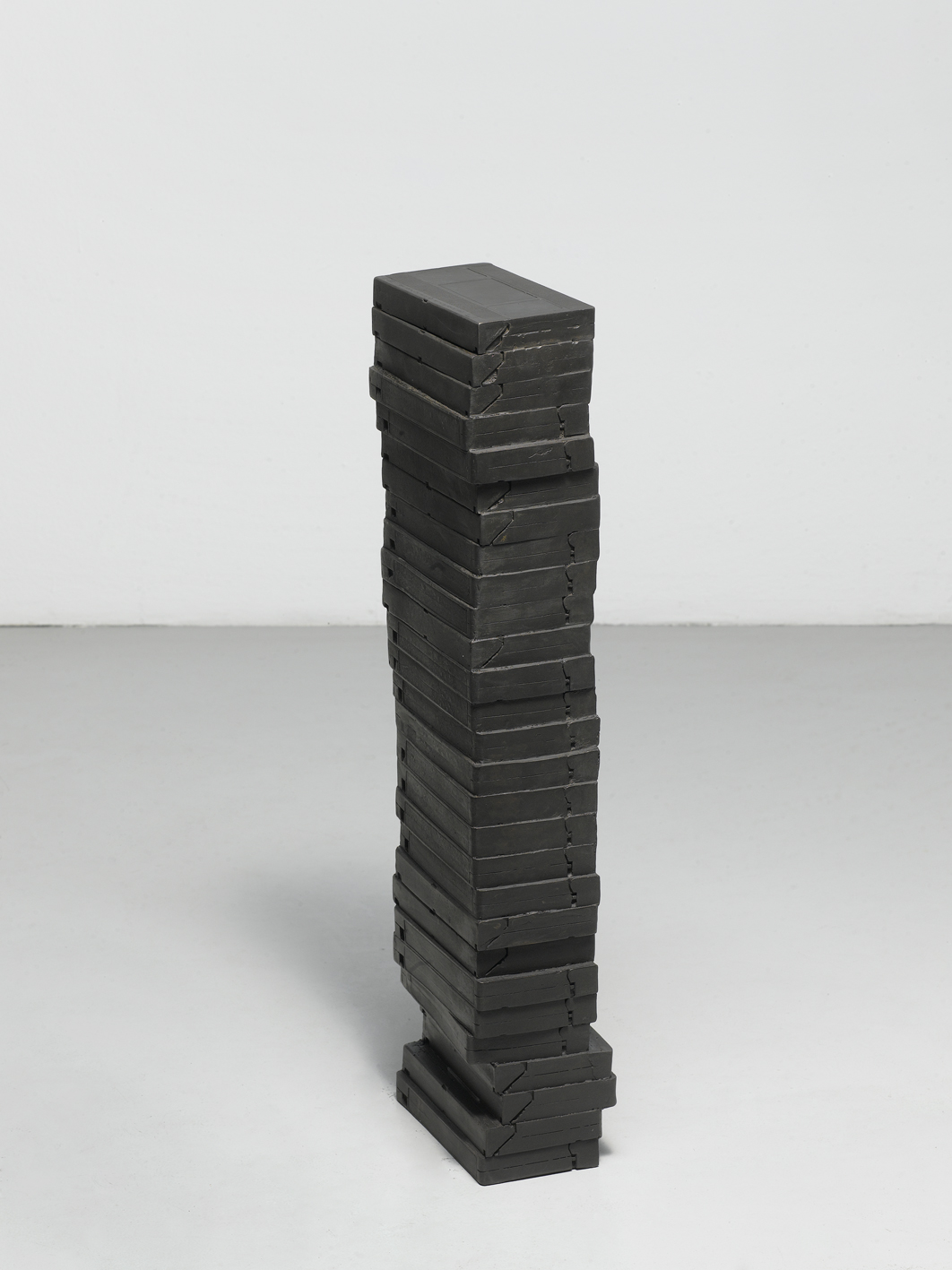
Year: 2013
Medium: Bronze Sculpture (Unique)
Dimensions: 67,5x20x12,5cm
The artistic practice of Joep van Liefland is distinguished by a precise, almost archaeological investigation of video technology. He works with a great number of forms of expression and media at the intersection between the analog and the digital and at the same time, persistently, stringently–nearly monomaniacally–insists on continually examining the assembled artifacts anew from different perspectives.These artifacts belong to a continually growing collection of more than 50,000 video cassettes, boxes of remote controls and instructions, piles of used televisions as well as early computers and assorted information technology. In his installation Video Palace, which has been shown in different versions since the early 2000s, van Liefland mixes and remixes all of these elements. In this way, a number of groups of work have developed, which the artist has combined in various contexts: silkscreen printing, assemblage, sculpture and installation elements.
Lüdemann’s works are generally on the cusp between seductive sensuality and utter brutality, serenity and irritation. She is moving on a psychological plane – an emotional, yet highly analytical landscape – that is informed by personal emotions, Greek mythology, spirituality, religion, pornography and gender studies. Lüdemann studied Fine Art, English linguistics, psychology, philosophy and education at Cologne University and then moved to Norway, Italy, England and Holland to learn four languages and provoke her alter-egos. In 2010 she was selected for an influential residency in Spain with Mona Hatoum and later that year received a scholarship to study in the MA Fine Art Course at Central Saint Martins, which she completed with distinction in 2011. Her work has been exhibited widely and internationally, including at Printed Matter, New York / Goethe Institute Cairo, Egypt / Collegium Hungaricum, Berlin / Hayaka Arti – Istanbul, Turkey / Trafo – Szczecin, Poland / LYON Biennale de la Danse – La lavoir public, Lyon, France / HDLU, Zagreb, Croatia.
Schnitzelporno
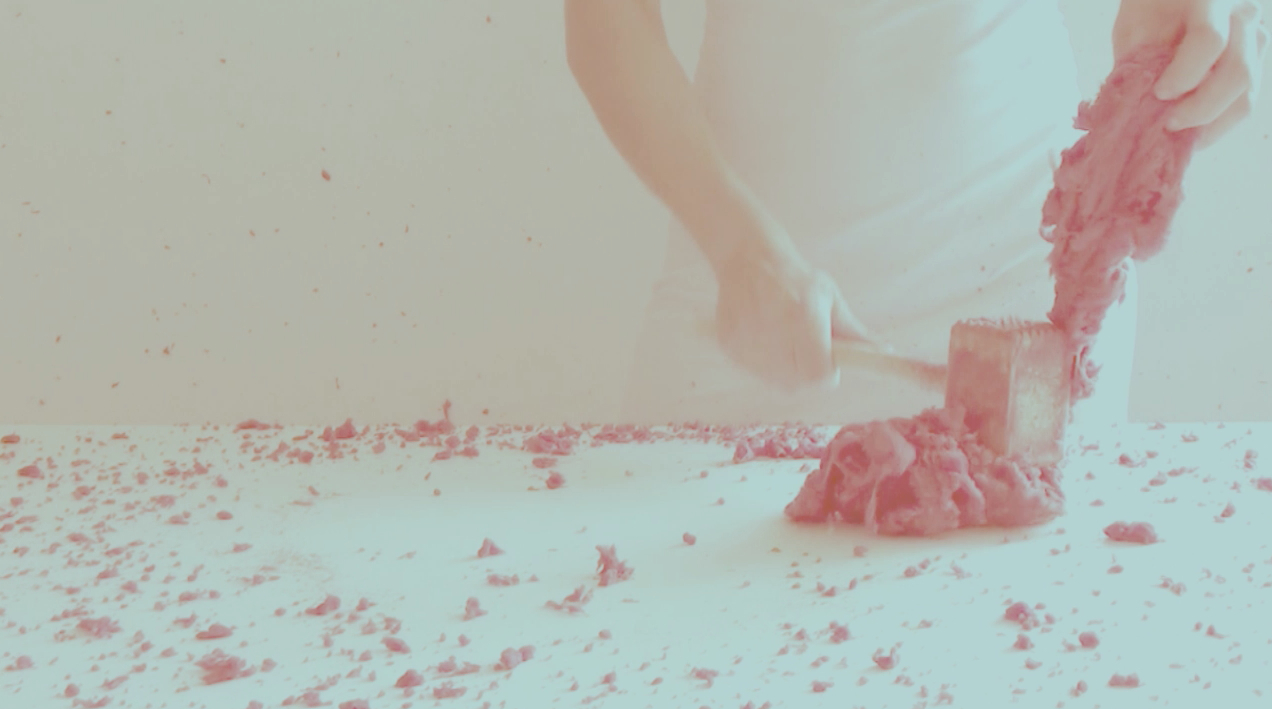
Year: 2012/2016
Medium: video, tenderizer (used), beef, sound (loop)
“It’s a peculiar apparatus,” said the Officer to the Traveller, gazing with a certain admiration at the device […] As you see, it consists of three parts. With the passage of time certain popular names have been developed for each of these parts. The one underneath is called the Bed, the upper one is called the Inscriber, and here in the middle, this moving part is called the Harrow. […] The name fits. The needles are arranged as in a harrow, and the whole thing is driven like a harrow. […] There in the Inscriber is the mechanism which determines the movement of the Harrow, and this mechanism is arranged according to the diagram on which the sentence is set down. […] Do you understand the process? The Harrow is starting to write. […] In this way it keeps making the inscription deeper for twelve hours. […] But how quiet the man becomes around the sixth hour! The most stupid of them begin to understand. It starts around the eyes and spreads out from there. A look that could tempt one to lie down under the Harrow. Nothing else happens. The man simply begins to decipher the inscription. He purses his lips, as if he is listening. You’ve seen that it’s not easy to figure out the inscription with your eyes, but our man deciphers it with his wounds.”
Excerpts from The the Penal Colony, Kafka, 1919
Gold
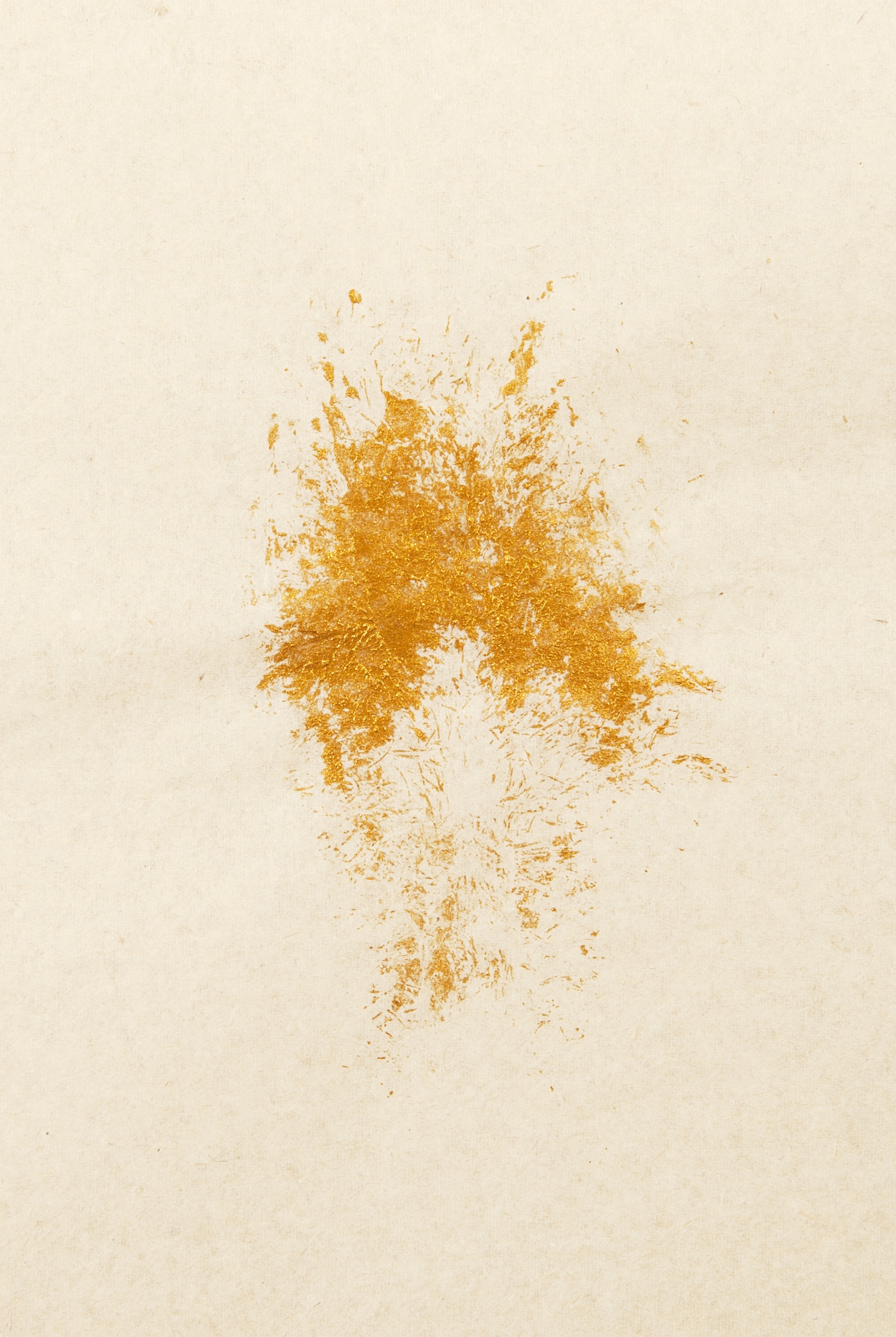
Year: 2016
Medium: print with pubic hair and golden acrylic, found paper and wooden frame
Dimensions: 47 x 37,5 cm
I print with my pubic hair and golden acrylic onto paper. A gesture, so primitive and lumpen, like a dog that pisses on lampposts to mark its territory. It is like that we place ourselves in the world. The mark in itself golden, delicate, fine, discreet. Pussy riot deluxe? Seduction and dominance? Expression of female powers? Gold always the color of the gods, enlightenment, nirvana and the vagina a symbol of the Great Mother, the Origin of the World (Corbet), the beginning of it all.
Bjørn Melhus, born 1966, is a German-Norwegian media artist. In his work he has developed a singular position, expanding the possibilities for a critical reception of cinema and television. His practice of fragmentation, destruction, and reconstitution of well-known figures, topics, and strategies of the mass media opens up not only a network of new interpretations and critical commentaries, but also defines the relationship of mass media and viewer anew.
Originally rooted in an experimental film context, Bjørn Melhus’s work has been shown and awarded at numerous international film festivals. He has held screenings at Tate Modern and the LUX in London, the Museum of Modern Art (MediaScope) in New York, and the Centre Pompidou in Paris, amongst others. His work has been exhibited in shows like The American Effect at the Whitney Museum New York, the 8th International Istanbul Biennial, solo and group shows at FACT Liverpool, Serpentine Gallery London, Sprengel Museum Hanover, Museum Ludwig Cologne, ZKM Karlsruhe, Denver Art Museum among others.
Freedom & Independence

Year: 2012/2016
Medium: video, tenderizer (used), beef, sound (loop)
FREEDOM & INDEPENDENCE confronts neoliberal elitist thinking using generic media fragments of religious prophecies about the end of time in the setting of a privatized habitat marked by architectures of megalomania. It is a tour de force using elements of fairy tales, musicals, comedy and horror films to scour our global psyche for ingrained promises of salvation, childhood traumas and the work ethic as it is affected by our desire for self-improvement.
Tracey Moffatt is one of Australia’s leading contemporary artists of international renown. Since her first solo exhibition in Sydney in 1989, she has had numerous exhibitions in major museums around the world. Working in photography, film and video, Moffatt first gained significant critical acclaim when her short film “Night Cries” was selected for official competition at the 1990 Cannes Film Festival. Her first feature film, “Bedevil,” was also selected for Cannes in 1993. In 1997, she was invited to exhibit in the Aperto section of the Venice Biennale, and a major exhibition of Moffatt’s work was held at the Dia Center for the Arts in New York in 1997/98, which consolidated her international reputation.
Other

Year: 2009
Artist: Tracey Moffatt and Gary Hilberg video collaboration
Duration: 7 min
“Other” incorporates film techniques – splicing film clips, combining chronologies, creating and dissolving narratives. “OTHER is a fast paced montage of film clips depicting attraction between races. Marlon Brando looks at Tahitian girls and Samantha from Sex and the City ogles an African American football player in the men’s locker room. Seven minutes of gazing and touching and exploding volcanoes. Very funny, very hot.”
Timea Anita Oravecz, born in Budapest 1975, graduated in 2007 with BFA from Accademia di Belle Arti, Department of Sculpture, Venice and then an MA under Professor Olafur Eliasson at Institut fur Raumexperimente (2009-2011). She now lives and works in Berlin.
She has won several grants including: MOSTYN Open Award, UK, Fellowship Residency Program Kamov, (Croatia), Fellowship Goldrausch Künstlerinnenprojekt art IT, (Berlin), New York Prize at the Triangle Arts Association (New York), DAAD Fellowship Awarded Artist, UDK Berlin, and more.
Timea Anita Oravecz’s works have been shown internationally, Solo shows include: Camping Europa, Spor Klubu, Berlin (2014), Nothing that Exists or Happens is Symmetrical, CHB Berlin (2013) and Transparent rooms – nach hause, Galerie M, Berlin (2010) – Group Exhibitions: MOSTYN Open 19, curated by Adam Carr, Mostyn Gallery, UK (2015), Future Nows, curated by Olafur Eliasson, Neue Nationalgalerie, Berlin (2014), Exuberant Politics, Iowa City and Legion Arts in Cedar Rapids, USA (2014), Drifting, curated by Valerie Smith, Haus der Kulturen der Welt, Berlin (2013), In other words, NGBK and Kunstraum Kreuzberg/Bethanien, Berlin (2012), in addition to showing in Krakow, Hungary, New York, Vienna, United Kingdom and more.
Time Lost
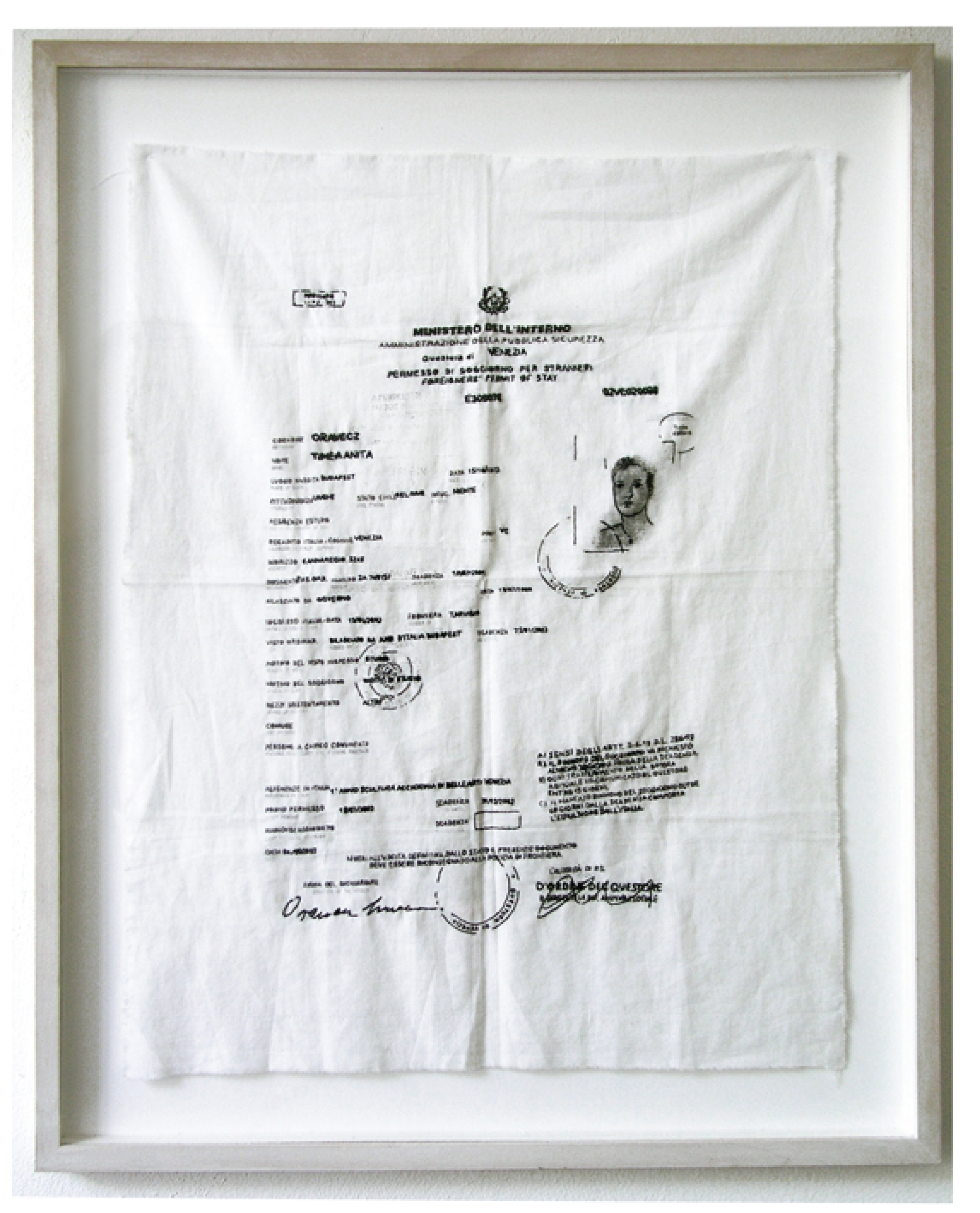
Year: 2007
Medium: Hand embroidered on textile, framed, series I – III
Dimension: each 70 × 60 cm
Taking the shape of embroideries, Time Lost presents the administrative
documents for which the artist had to apply during the nine years she spent travelling in a presumably borderless and united Europe as an art student and scholarship holder from Central Europe. Oravecz tried to
meet the bureaucratic requirements as best as she could. Accordingly, she embroidered every letter, code, stamp and signature on the »forms«, even though the task proved time-consuming, senseless and, due to the countless details, simply impossible – not to mention that she occasionally hurt herself with the needle. (BH)
Instant Bag

Year: 2006
Medium: object, mixed media, series VIII – XIII
Inside the young Hungarian artist Tímea Anita Oravecz’s Instant Bags, one finds accurately stored personal objects and various clothing items: what at a first seem to be simple suitcases at a second glance reveal their true nature: that of various wooden compartments, cardboard boxes and used materials of a modest value. These “small boxes”, with their strong symbolism, enclose the identity of a person to whom those objects belong: a traveller or an emigrant, and starting from simple towels, shirts or shoes everything we observe transforms into emotional tension. This tension evokes and suggests a consideration of problems that come together with migration – whether permanent or not, that will take the migrant away from his nation of origin, into a new one, unknown and of uncertain reception. In moving what imposes crossing of geographical and cultural boundaries the objects that one decides to take with oneself become the story of one’s life, one’s history and in a way, it represents that what one is leaving behind. A survival kit becomes in that way a tangible sign of the painful selection one had to make at the moment of departure, lived through without a certainty of a future return. In this way, other objects are added to the ones that represent physical needs of everyday life, maybe even useless, but still symbols of attachment to everything that is familiar, a memory, and from which one does not whish to separate. These extremely emotionally charged works originate from the starting enquiry, that is, from the questionnaires that the artists wants the public to fulfil involving them thus in her project. The suitcases become representations of an identity, an archive of personal memories that unites the present and the past: by observing these instant bags we are asked to compare ourselves with the typical human condition of wandering, of migration, the everlasting symbol of a painful separation, searching, change, reconstruction.
(Giulia Camin)
Stefan Rinck is a German visual artist who was born in 1973 in Homburg/Saar. He studied Art History and Philosophy at the Universität des Saarlandes in Saarbrücken and Sculpture at the Academy of Arts in Karlsruhe.
Stefan Rinck has had several gallery and museum exhibitions, including at Sorry We`re Closed (Brussels), Vilma Gold (London) and Patricia Low Contemporary (Gstaad, St. Moritz) , de Hallen (Haarlem),Gallery Rüdiger Schöttle (Munich), The Breeder (Athens), Galeria Alegria (Madrid), Cruise&Callas and Klara Wallner Gallery (both in Berlin). He participated at the Busan Biennale in South Corea and at the Vent des Foret in France where he realized permanent public sculptures.
Behemoth
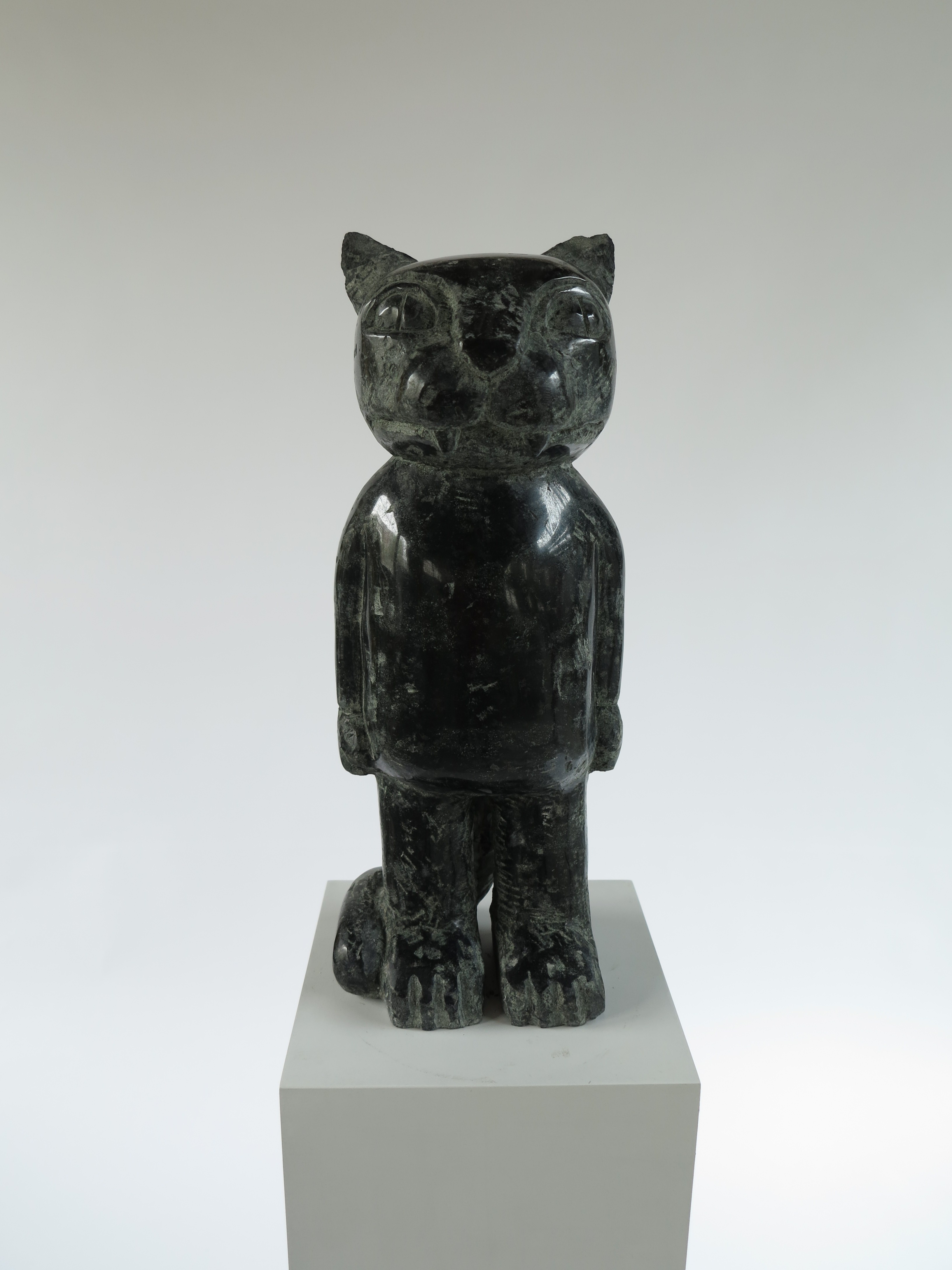
Year: 2014
Medium: Sculture Dolorit (Diabas)
Dimension: H 55 cm x B 25 cm x L 20 cm
My sculptures are not pretending to look like modern art. They look more like primitive art out of an ethnological museum, gargoyles from gothic cathedrals and reliefs from medieval Romanesque church’s. One of my role models is Picasso because he too had used primitive elements in his work. Even though I admire Michelangelo and the sculptors of the baroque I am not interested in refinement and virtuosity. Accordingly brutal I carve the figures out of quadratic stone blocks. The iconographical figures I carve out of stone are findings from old medieval pattern books, forgotten cellar figures from Greek mythology, shady characters from the literature from Bulgakow to Zola and gods out of old codecs. The appeal of these stone figures is shifty and ambivalent. On the one hand they are physically present on the other hand representatives from a spiritual world. For me they seem to be guards of a parallel world, of a secret sanctuary. They warn us not to come too close to them.
Maik Schierloh was born in 1968 in Wilhelmshaven, Germany. He is a professional organ- and harmonium builder and studied fine arts painting at the FH Ottersberg (until 1996). From 1993 to 1996 he collected first artistic experiences in the art group ARTiV. Since 1997, he has been living as an artist in Berlin and has, besides various solo and group exhibitions, run the cultural project Lovelite. Since 2003, he has also run the bar Kosmetiksalon Babette.
Behemoth
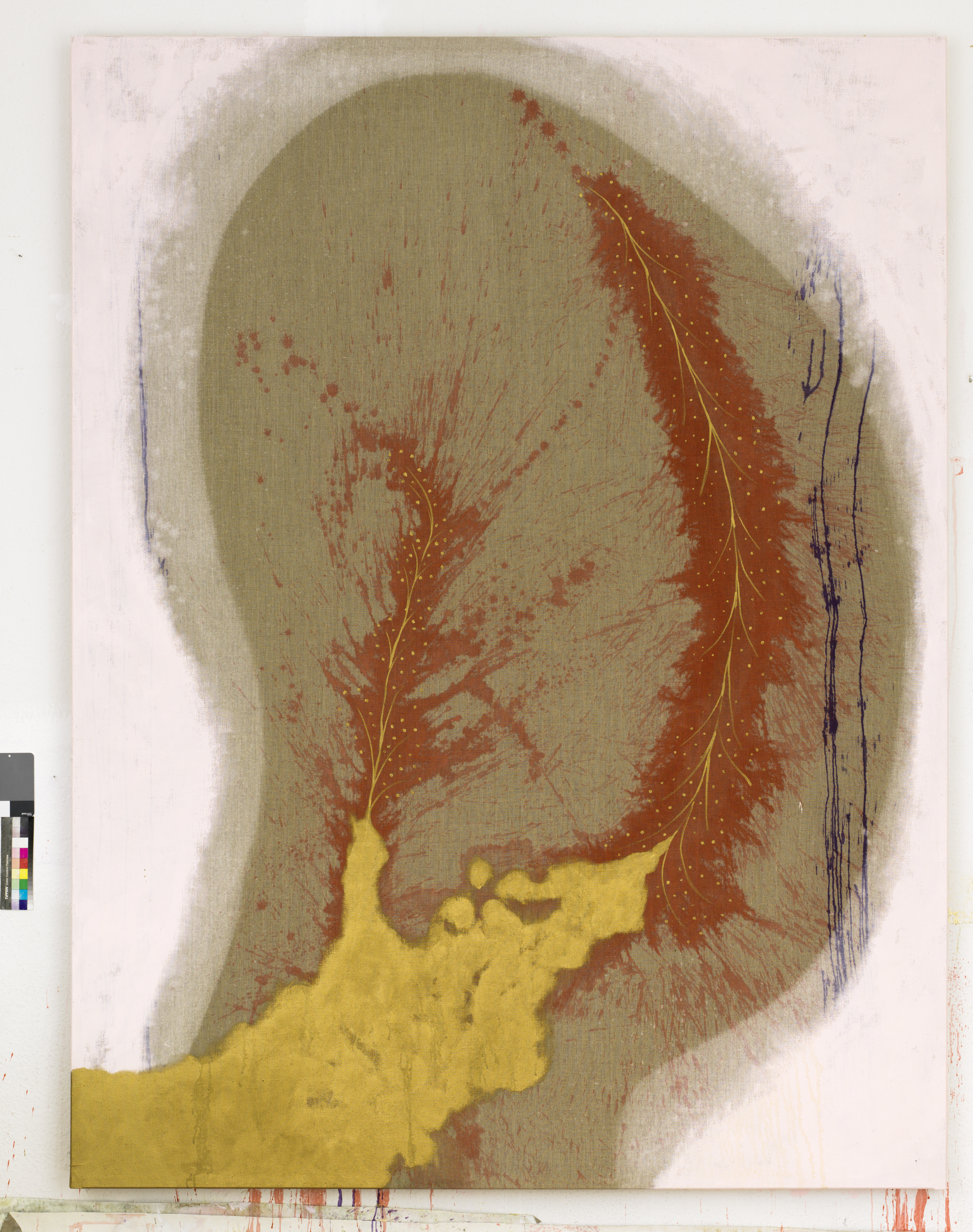
Gary Schlingheider was born in the early 1980s in Detmold, Germany, a little town located in the northwest of Germany. Detmold was his home throughout his childhood and early adolescence. After finishing school and an apprenticeship in geriatric nursing in 2006, Gary moved to Düsseldorf where he passed his A-level examinations. Shortly after, Gary enrolled in the Nursing Science program at the University of Bochum, a field of study he remains highly interested in. Since his early childhood, Gary has always interpreted the nature, people, and culture surrounding him in a creative way, composing sketches, sculptures, drawings, and paintings to this end. In 2008 Gary decided to focus on his artistic career and moved to Bielefeld to work at Künstlerhaus Lydda as an instructor and assistant for sculpture. This deeper involvement with art, both organising and participating in expositions, prompted Gary to assume an even deeper focus on his own creative efforts. He enrolled in the Fine Arts program at UDK(University of Arts) Berlin in 2010, where he was a student in the classes of both Pia Fries and Gregory Cumins. Gary Schlingheider is a student in the class of Christine Streuli and preparing his Master’s Thesis to finish University and graduate in the summer 2016.
Behemoth
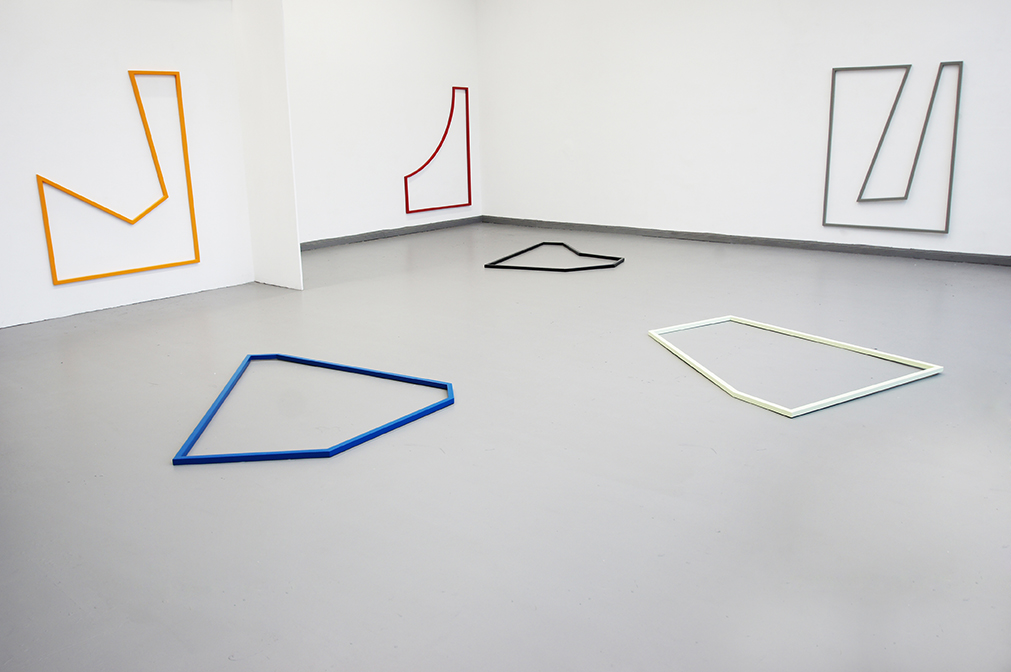
Martin Sexton is a London-based artist and writer who began his career as a science-fiction writer. Without a formal background in fine art, Sexton considers his point of view to be more akin to that of a writer. Or as John-Paul Pryor of DAZED Digital has described, Sexton is “a raconteur of both constructed and real mythologies.” Sexton calls his works ‘futiques,’ a portmanteau alternatively evoking the terms future, critique, and antique. Sexton’s futiques are filmed in the past, screened in the present, and bear portents from the future. The layering of multiple temporalities in Sexton’s videos along with his narrative strategies, (primarily scrolling first-person text) lend them an ambivalent presence: who, or what, exactly can we consider the author?
Futiques
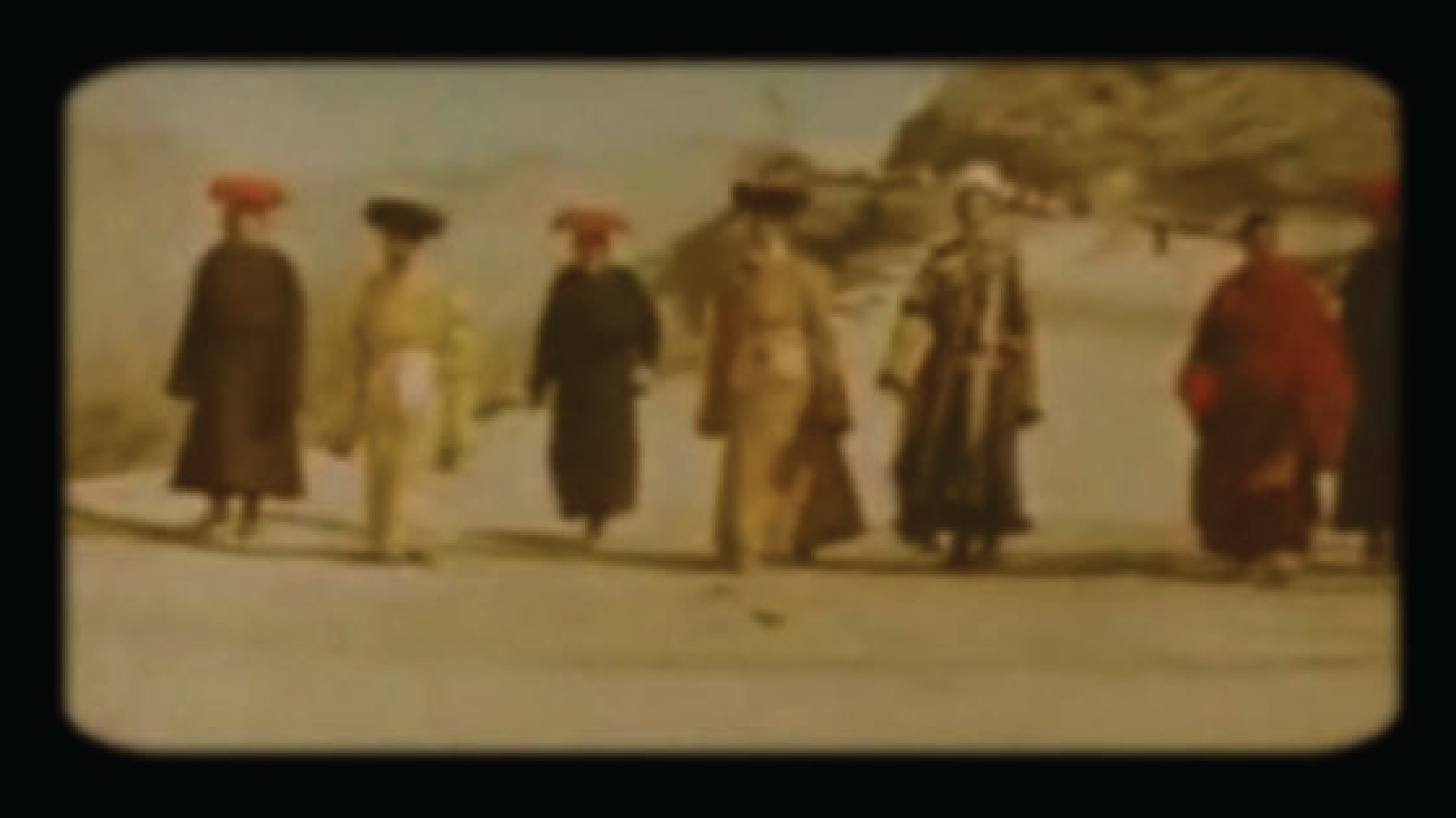
Born in a family of artists and educated in Moscow Polygraphic Institute, Varvara Shavrova lived and worked in Moscow, London, Beijing and Dublin where she is currently based.
Shavrova’s projects include over 20 solo exhibitions and curatorial projects in London, Dublin, Los Angeles, Berlin, Frankfurt, Moscow, St.Petersburgh, Shanghai and Beijing. Shavrova received a number of awards, including Fellowship from Ballinglen Arts Foundation in Ireland, British Council Visual Artist’s Award, Dublin City Council Visual Arts Award and Culture Ireland Awards for individual artists.
Shavrova’s solo projects include ‘The Opera’, a multi-media six screen projected installation commissioned by Espacio Cultural El Tanque, Santa Cruz de Tenerife, Spain, in 2011. ‘The Opera’ explores complexities of life and work of traditional Peking opera actors and gender fluidity associated with this art form, juxtaposed with harsh reality of living in modern day China. In 2012 ‘The Opera’ project was shown at the Gallery of Photography Ireland, touring to Limerick City Art Gallery, Ballina Arts Centre, and Pingyao International Photography Festival in China, in 2012. In 2014 ‘The Opera’ was presented at the Venice Biennale of Architecture and at The First Biennale of Photography and Video Art in Chongqing, China.
The Opera
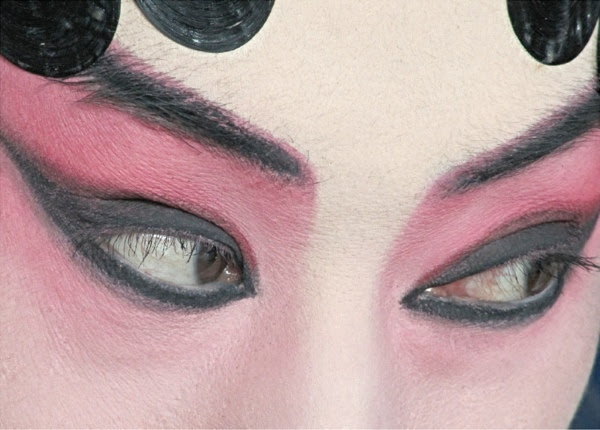
Year: 2010
Medium: Video
Duration: 21:23
Originally commissioned (2010) as a multi-channel video projection for the Espacio Cultural El Tanque, an empty oil tank in Tenerife, and subsequently shown at the Venice Architecture Biennale 2014, The Opera is an insight into the fragile world as well as social and human aspects of the Peking Opera, one of the most revered cultural heritages of the Chinese national scene. The Berlin premiere of The Opera in “Ganz Grosses Kino”p resents the single-channel version of the work.
The Opera focuses on the transformation of the Peking Opera artists from male to female, and from female to male. Although they are admired by society as artists, their true identities and personal hardships cannot be lived out openly. Looking into the archaic and often utopian world of Chinese opera, Shavrova investigates issues of personal identity, sexuality and gender bending as they are manifested by both traditional and contemporary culture in modern day China. Balancing moments of pure visuality with the austere formal movement codes of traditional choreography, the video underscores the striking avant-garde qualities of this most traditional of art forms. The Opera is accompanied by a specially commissioned music score written by the Beijing based composer Benoit Granier, that incorporates elements of traditional Chinese and contemporary electronic music.
Roman Soroko (Poland), lives and works in Berlin.
Collecting 16 mm and S8 mm films. Working on film installations, mostly 16 mm.
Dirty Cinema Talkies
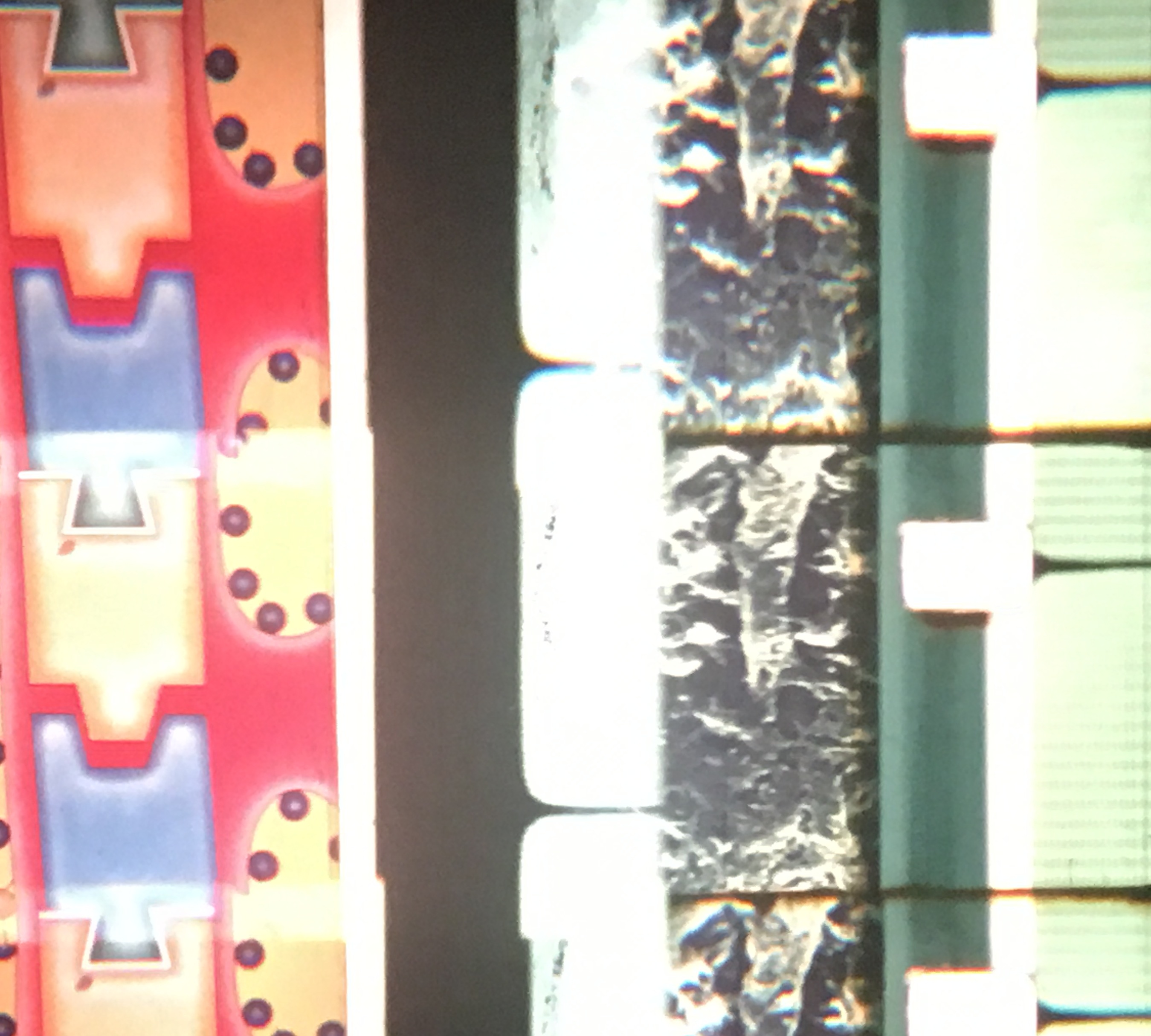
Year: 2016
Medium: Film installation
Dimension: 3 x 16 mm projection on loop
This work searching for visual and sound correlation. Film tape gives a possibility to playwith its structure. I´m focusing on tricky transition between the motion pictures into the sound.An abstract pictures play the role, and they are turning to be use also as an optical track. In thismatter, I´m looking for such a mixing of the original destiny of the pictures and I´m decomposing them, putting them into the new context. Working on found footages, I´m exploring a different layers of the cinematic background. Triple projection guide us in the cinema sculpture situation.Each pictures is related to each others, sound is mechanically synced to the picture from another projection.
MARIANA VASSILEVA was born in Bulgaria in 1964. Since graduating from the Universität der Künste in 2000, Vassileva continues to live and work in Berlin. Working across varied mediums such as video, sculpture, installation, and drawing, Vassileva’s practice is concerned with the poetry that lies beneath the quotidian and the routine. Based upon observation of daily life, her works respond to an element of playfulness inherent in artist and viewer alike. With the curious gaze of a voyeur or of an urban anthropologist, the artist observes people and their surroundings in order to capture a moment of poetic imagery. Watching, and the distance it implies, are both method and subject of a body of work reflecting on human concerns familiar to us all: communication, cultural displacement, relations with self and other, loneliness and the humor hidden within the rhythms of the day-to-day.
As her artist’s statement asserts, she “transforms objects, situations and manners, and presents them in another reference on a lyrical level. … In this process, one is animated toward a heightened sensibility of daily variations.”
From the Series Treasure is Everywhere

Year: 2008
Medium: Fabric, metal, synthetic material, wood, 2 light bulbs
Dimension: 200 x 120 x 50 cm
From treasured moments to treasured objects, our existence is encapsulated by the search for treasures, or for things to treasure. The installation, “Treasure is Everywhere”, speaks of the motive force within us all, the energy and enthusiasm which motivates us, and which can also spread to illuminate other things. Rachel Wolloch
Just a Game

Year: 2016
Medium: Neon, Barbwire, Wood
Dimension: 110×65 cm
Borderlines are inside and outside our bodies and mind – visible and invisible.
To be loved, to be free…to have enough for living and developing yourself and the people you love.
Is this possible?
 |
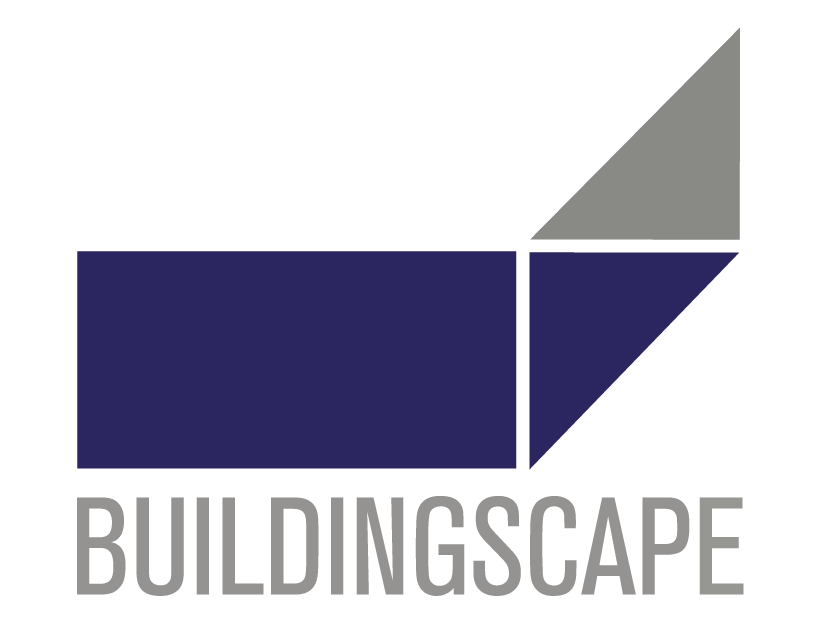 |
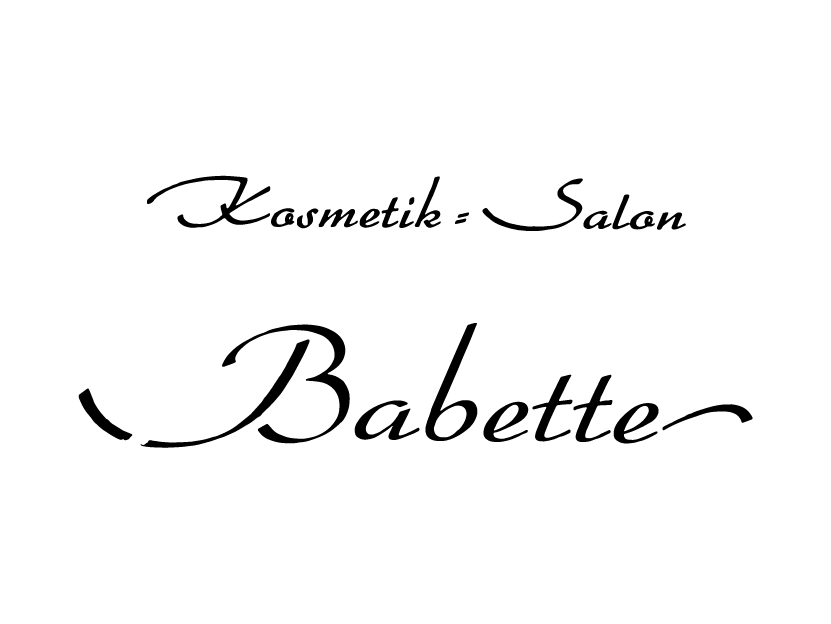 |
 |
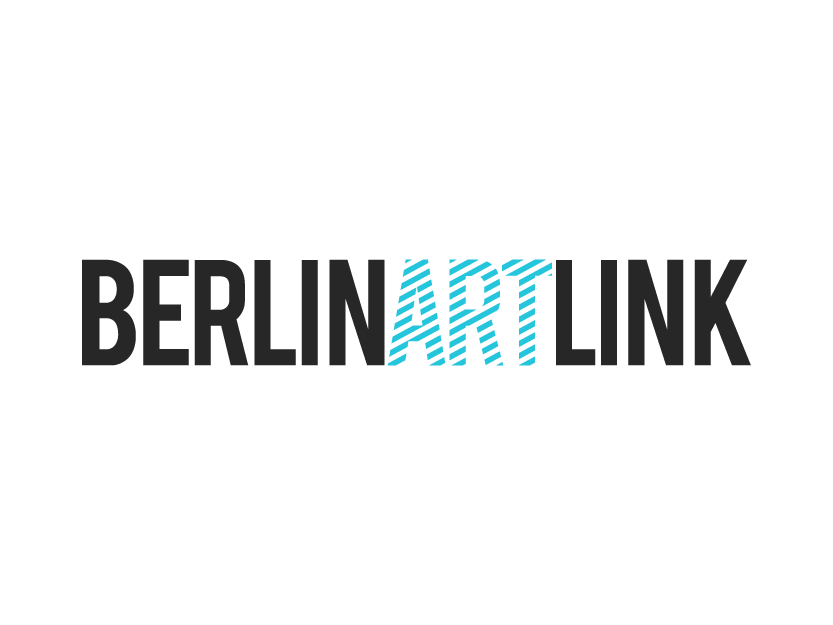 |
PHOTOS OF THE EVENT
(photos by Oliver Watersheid, Varvara Shavrova & Via Lewandowsky)


 Back to Homepage
Back to Homepage

